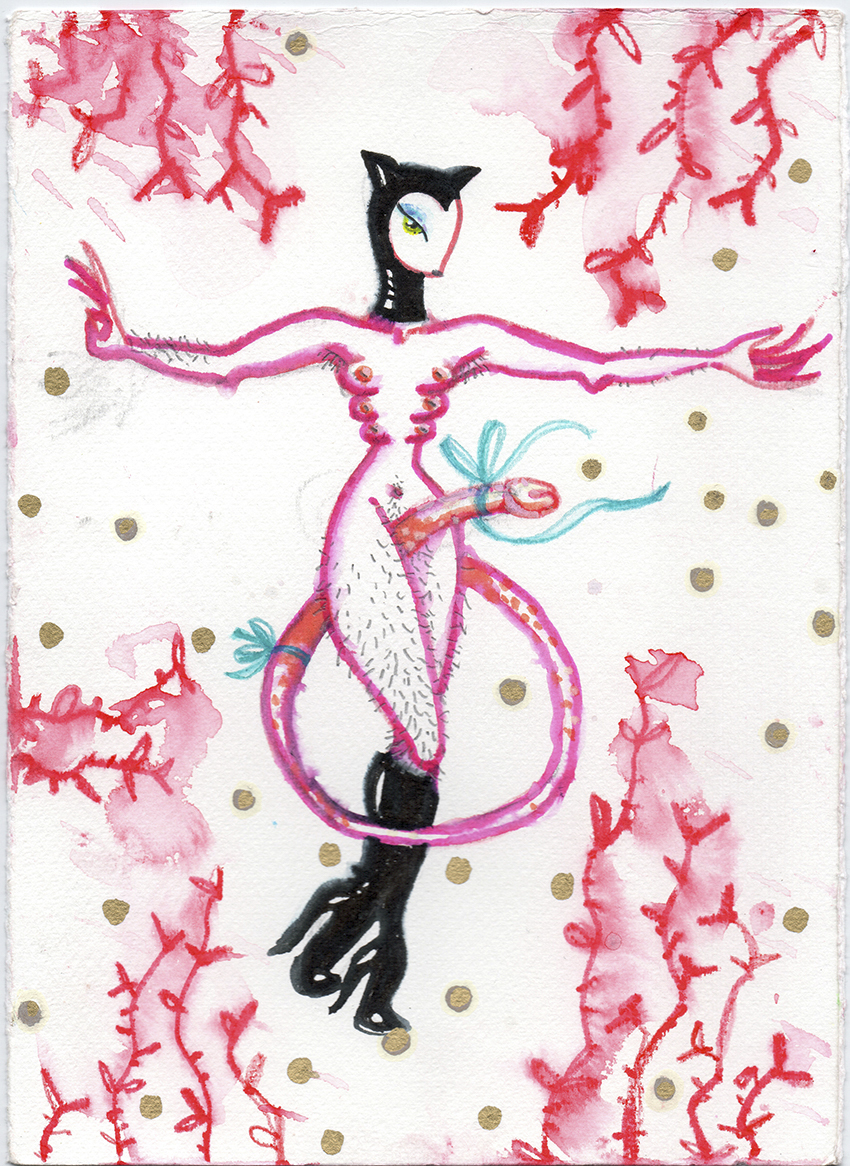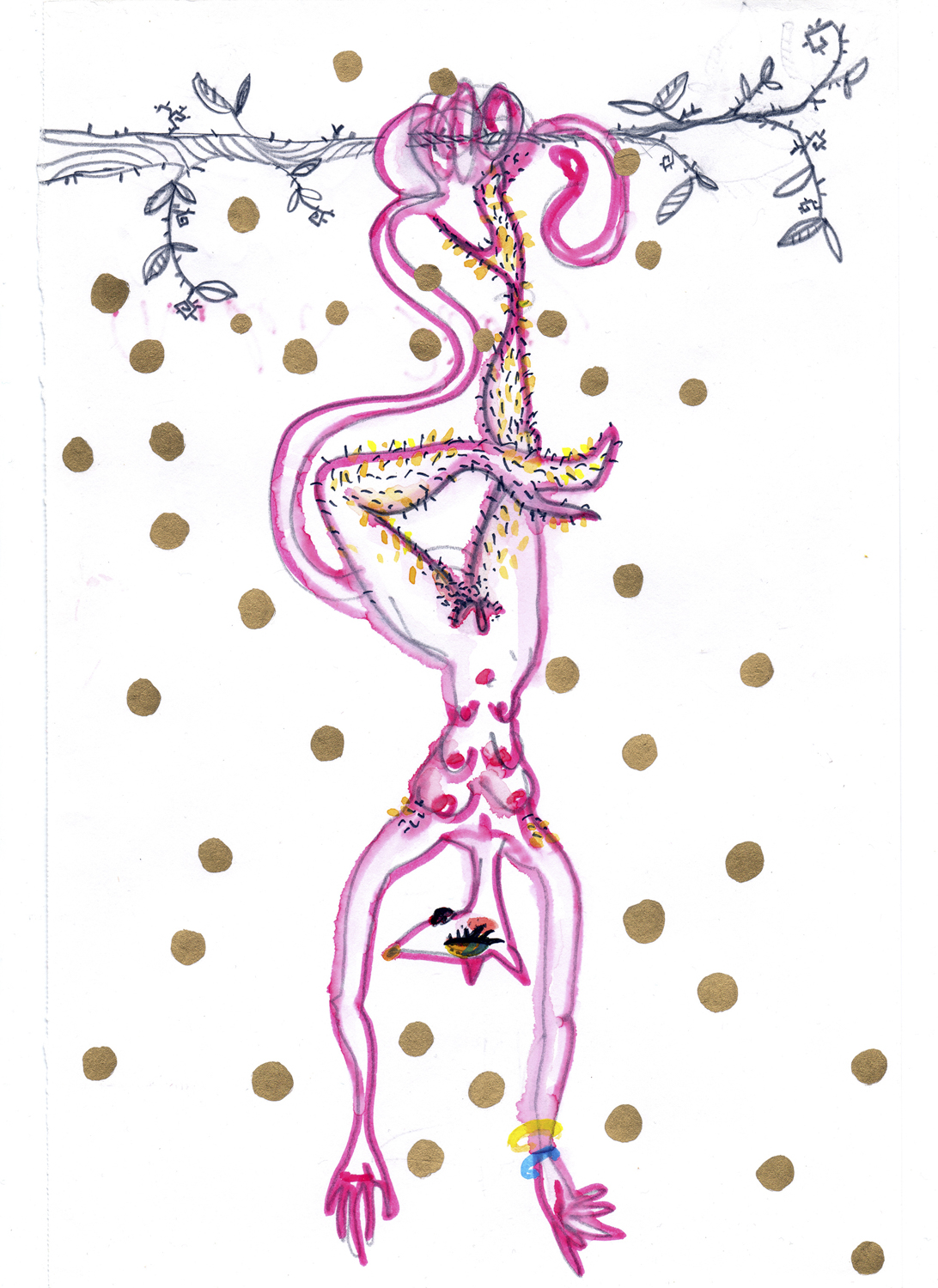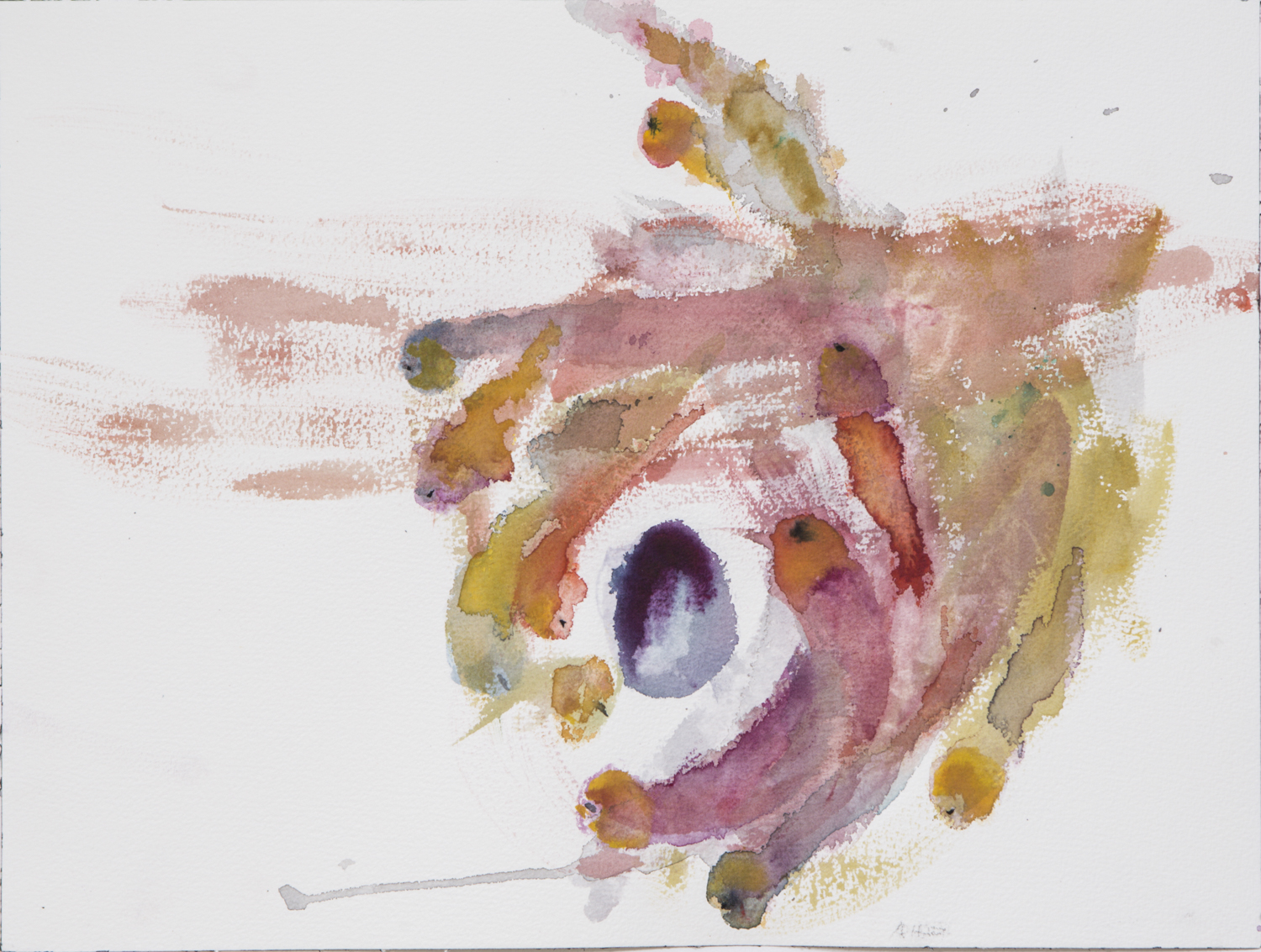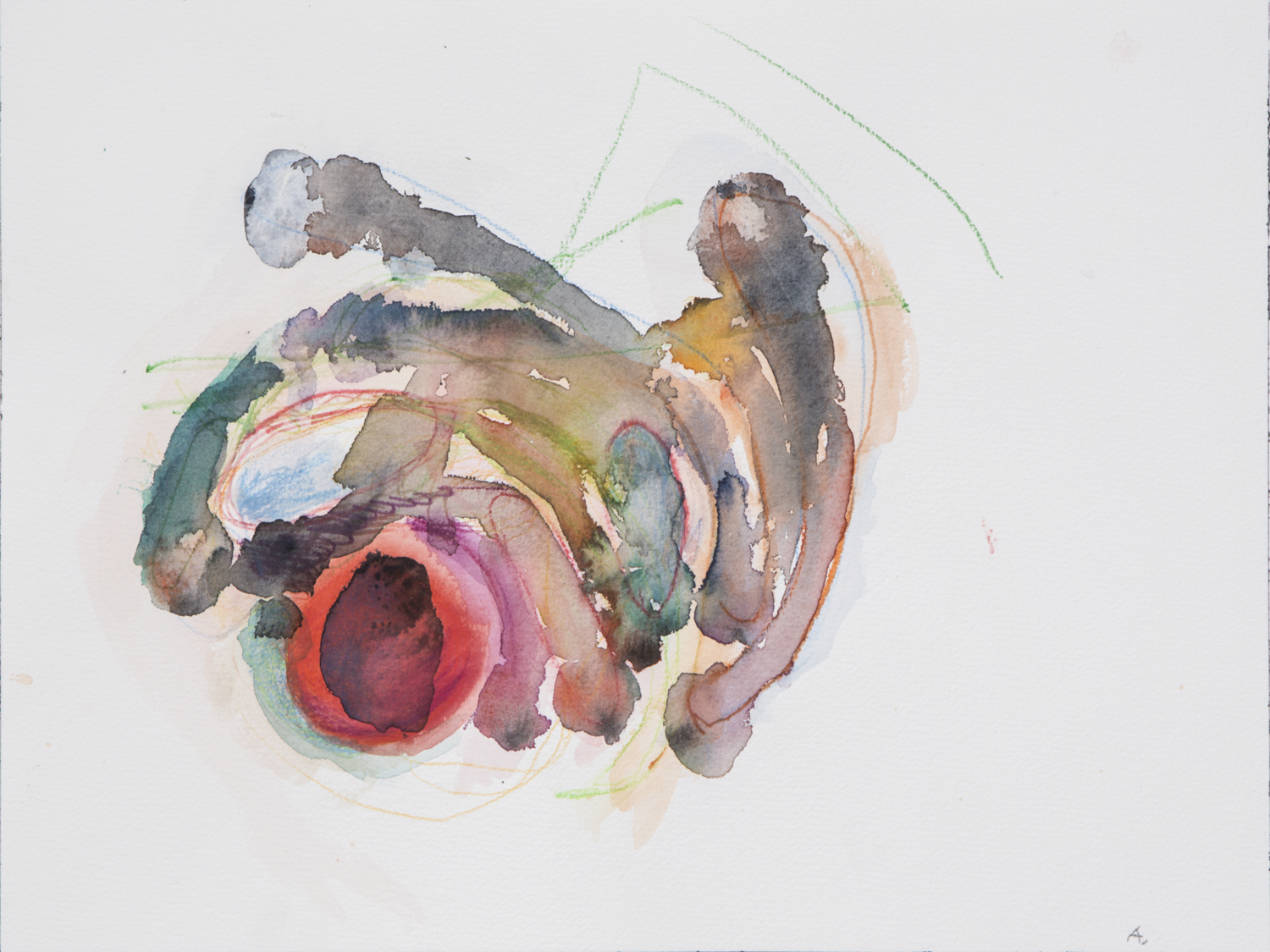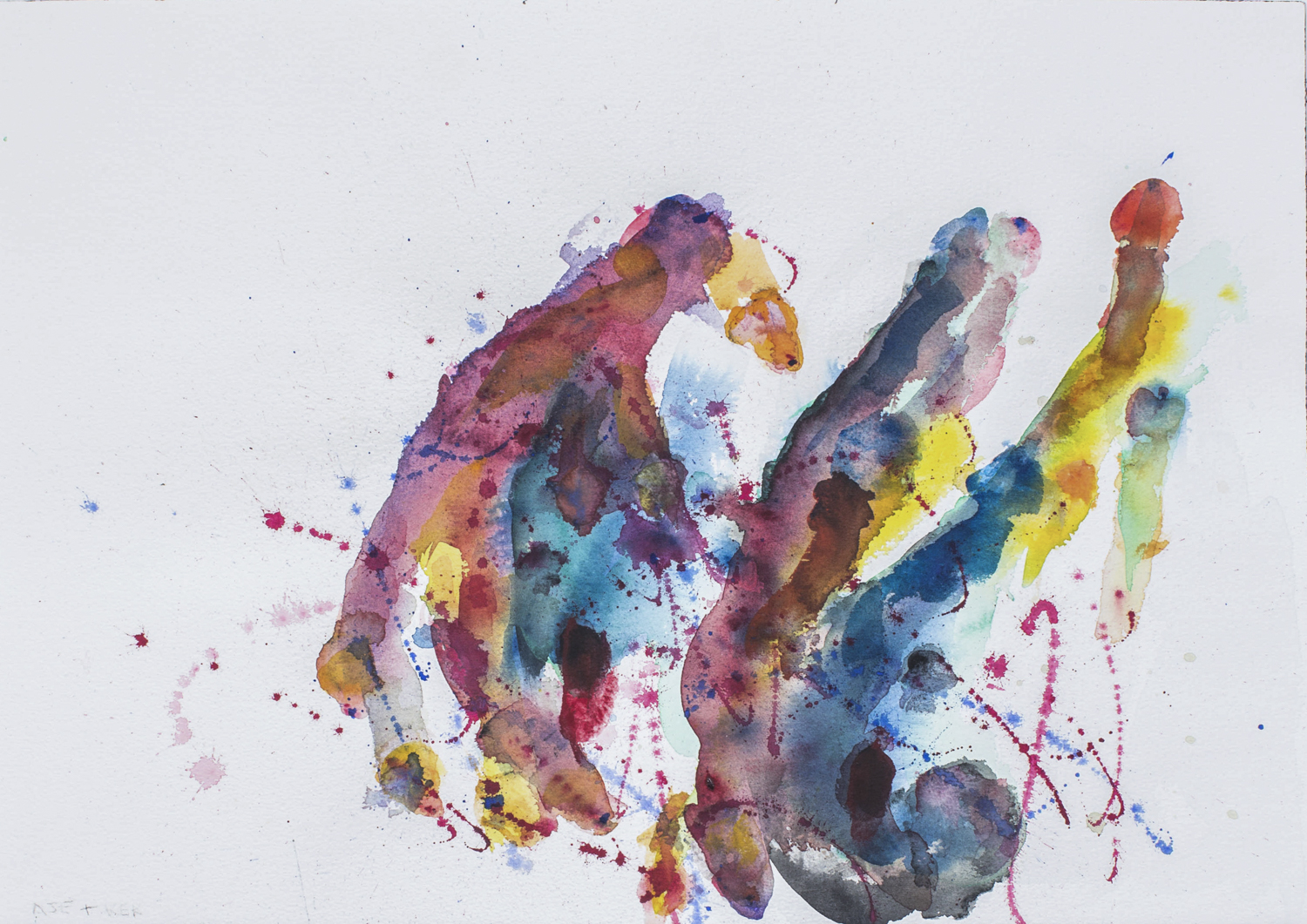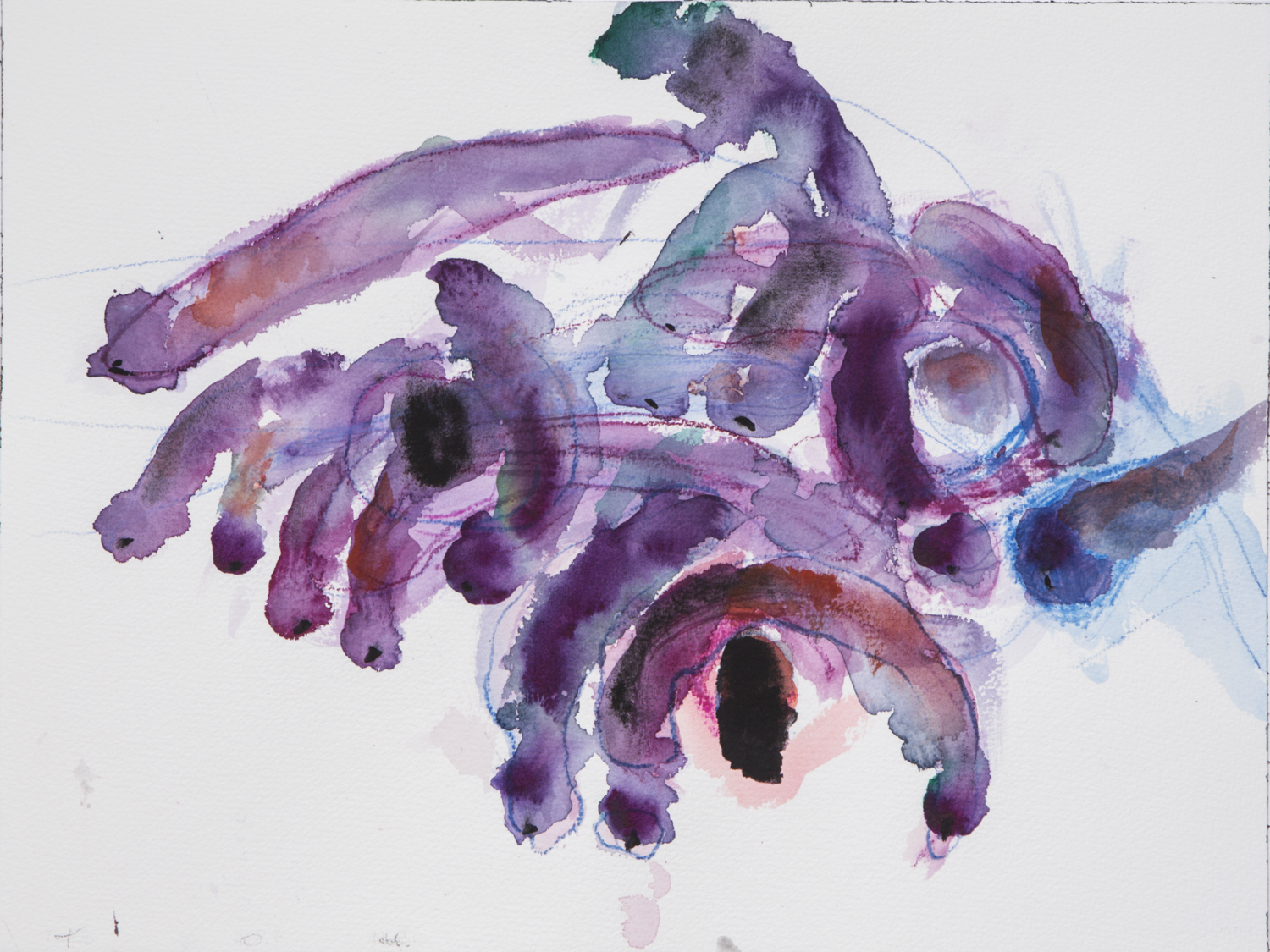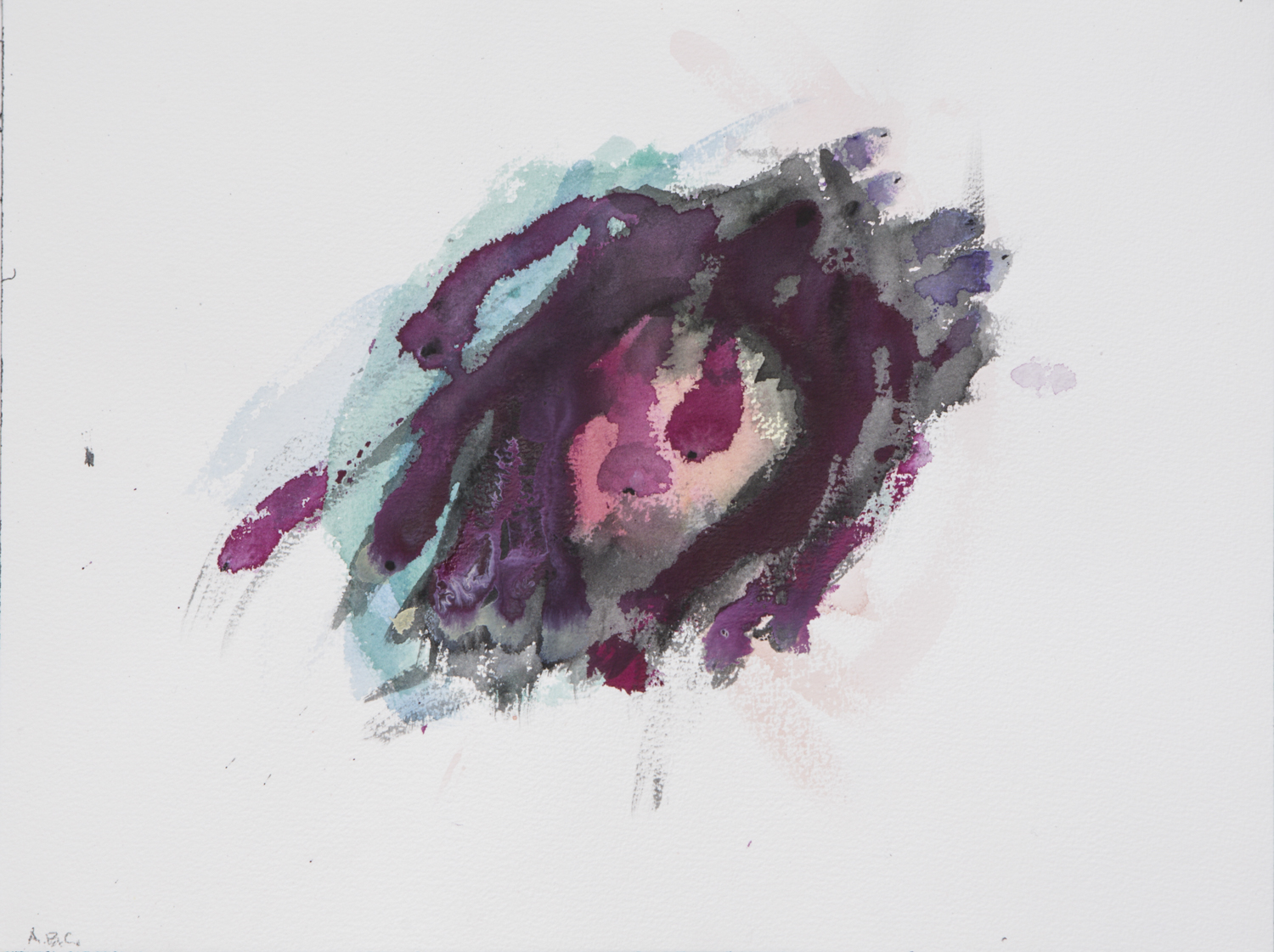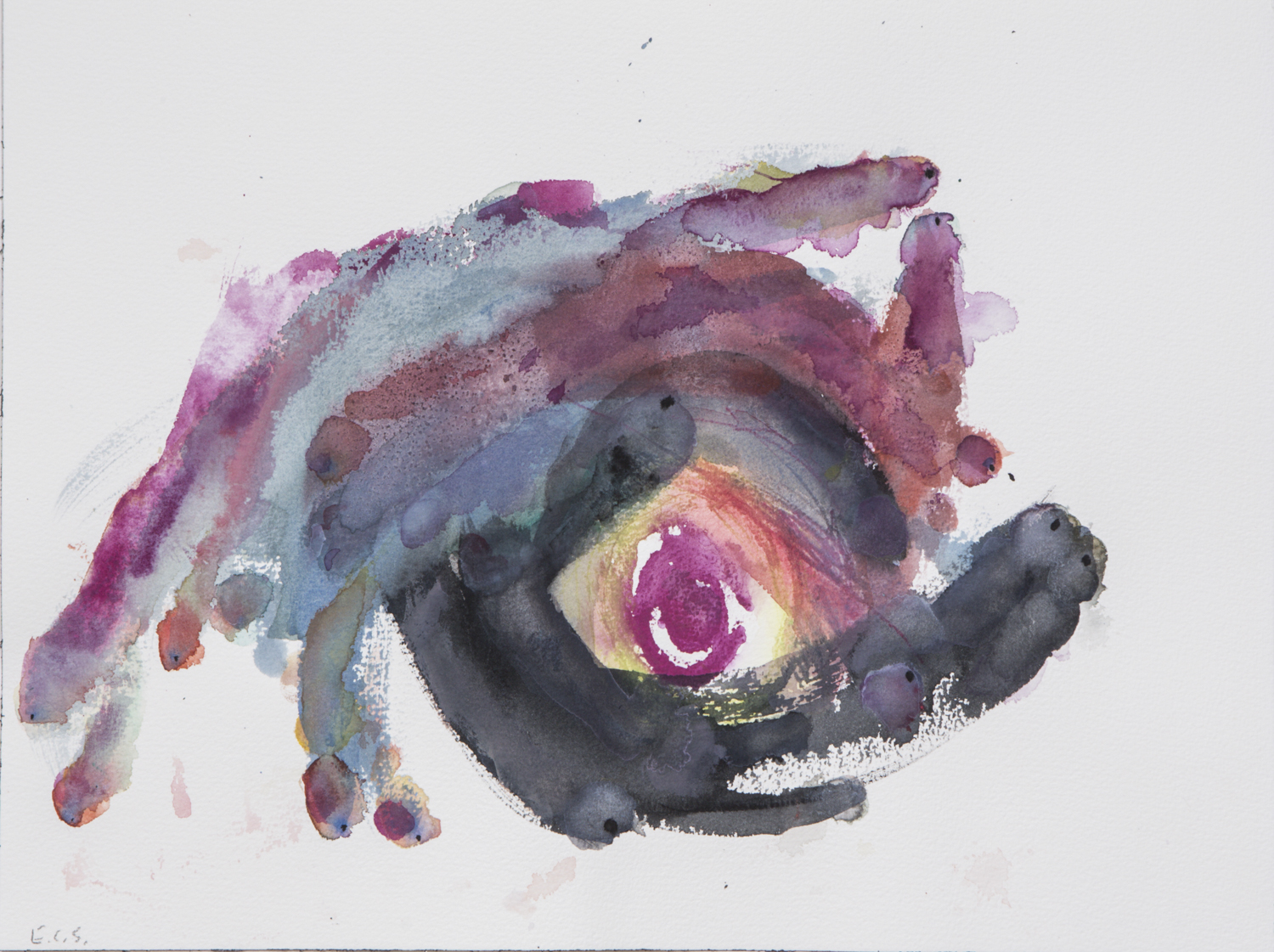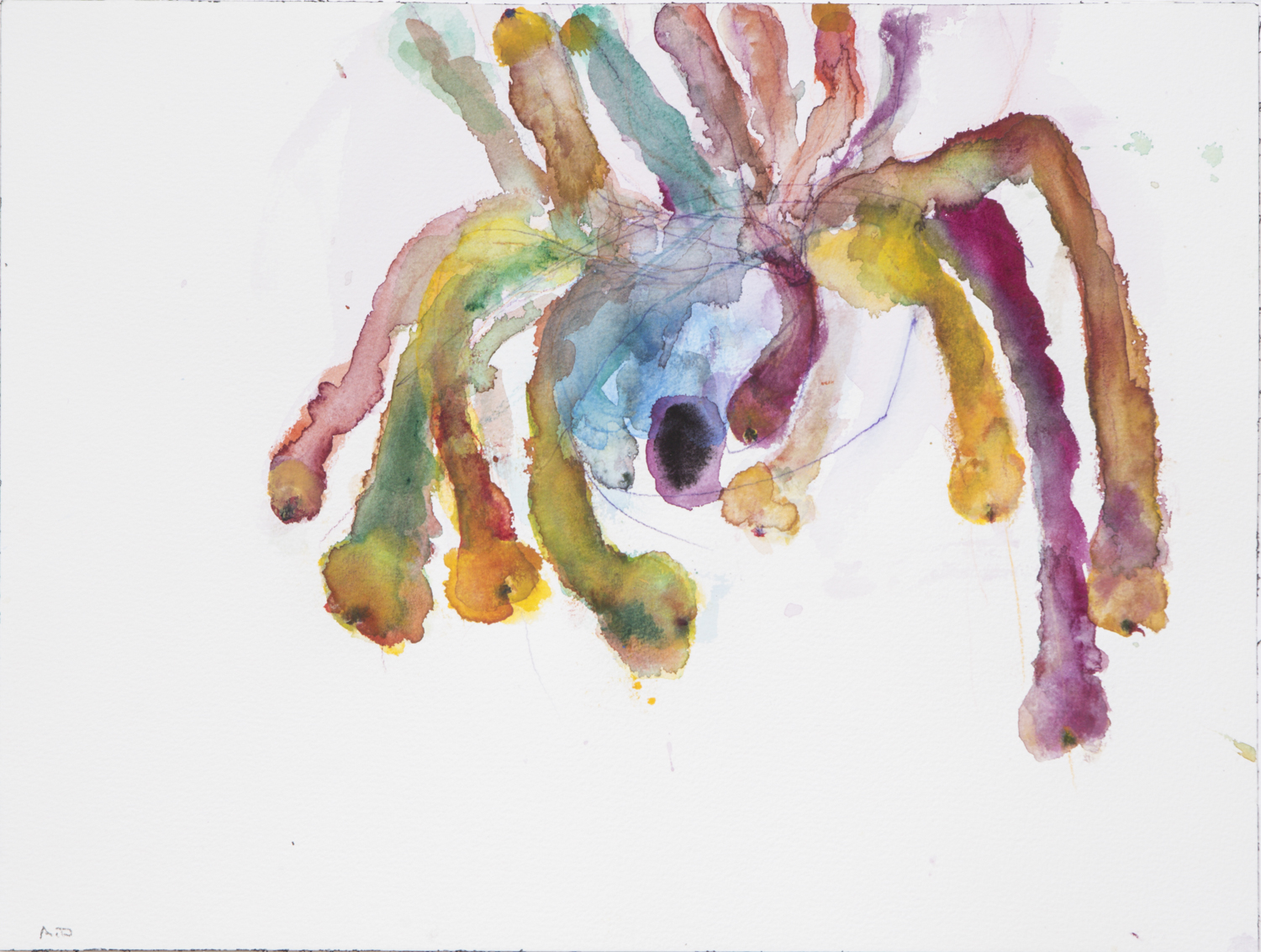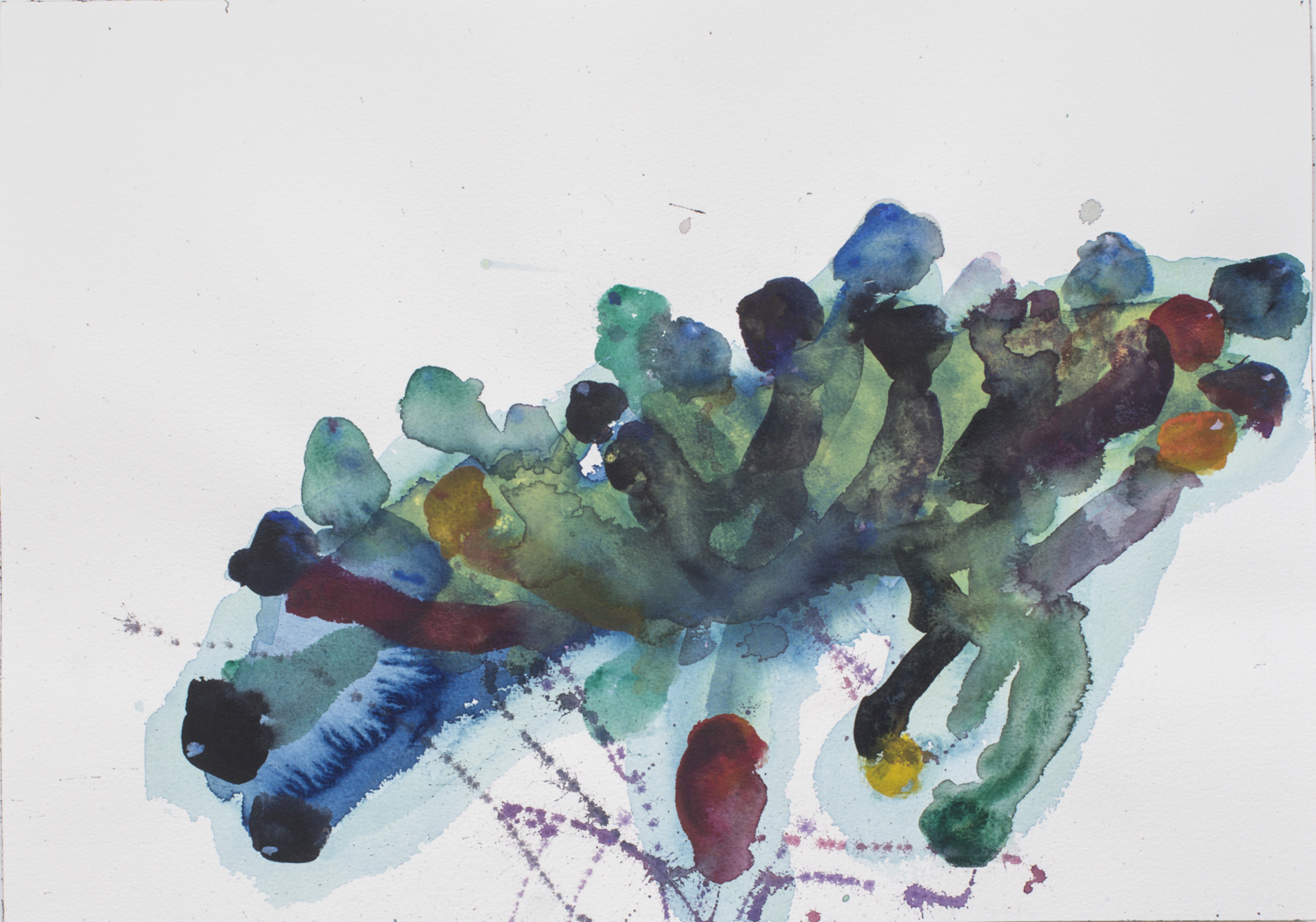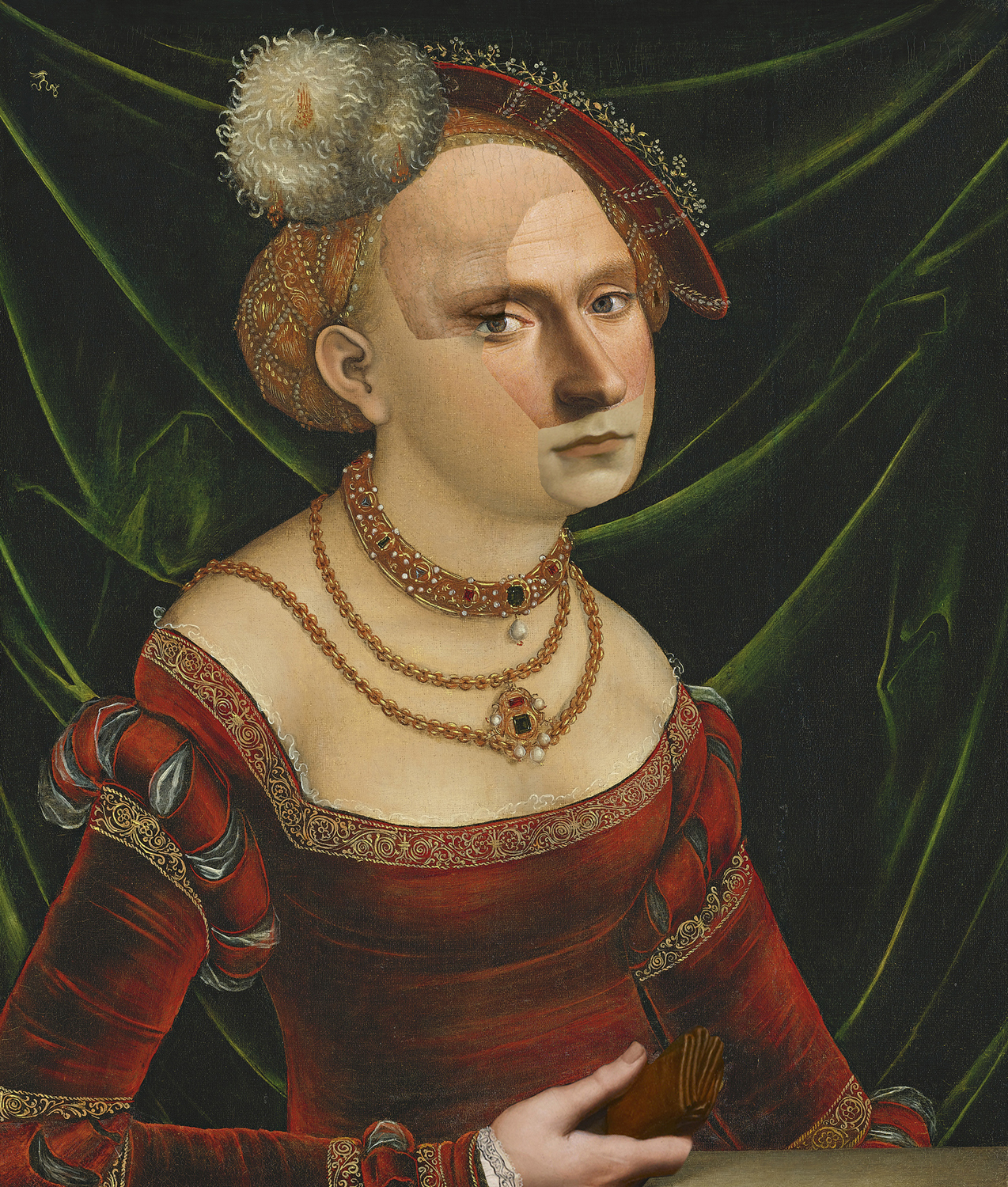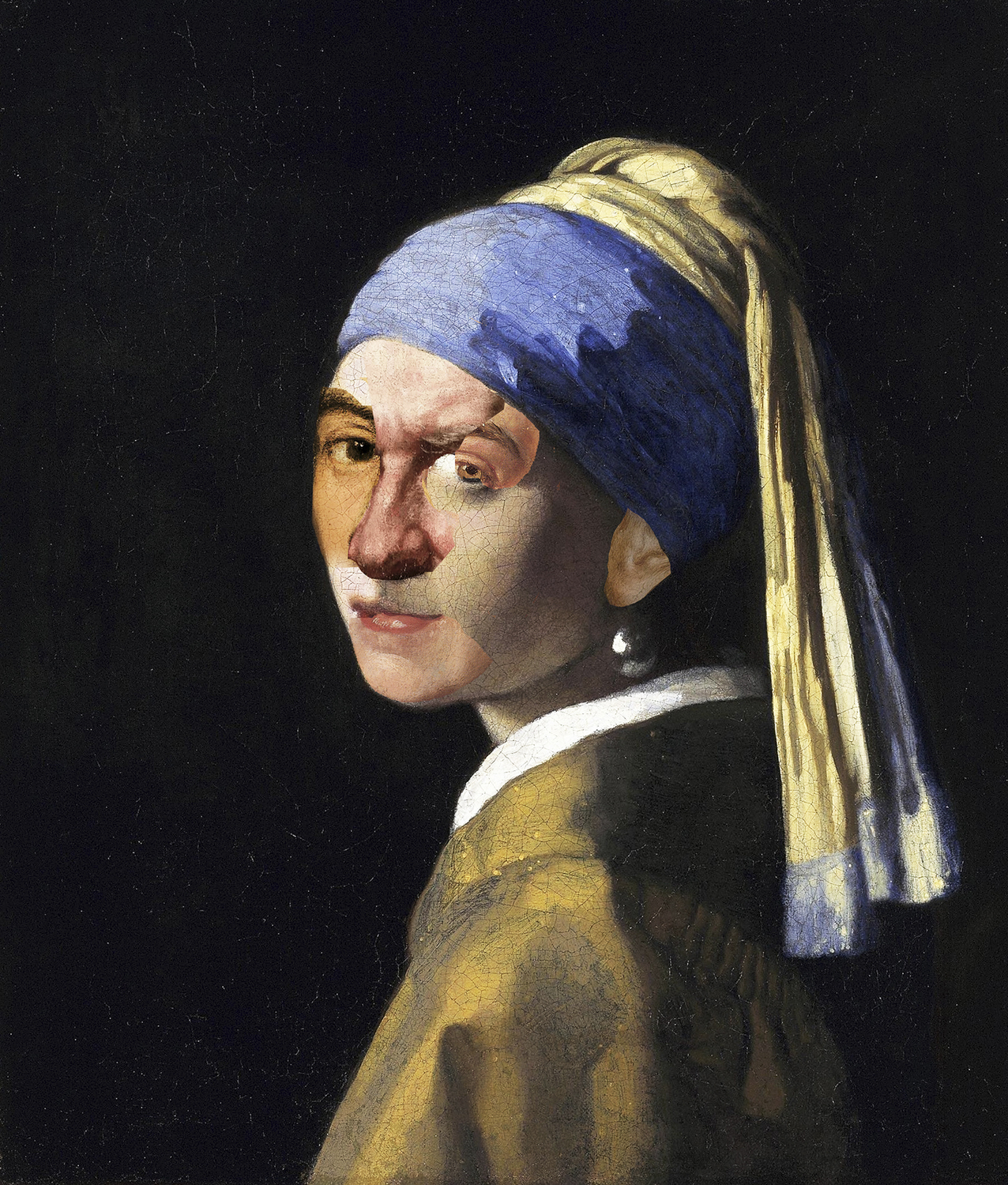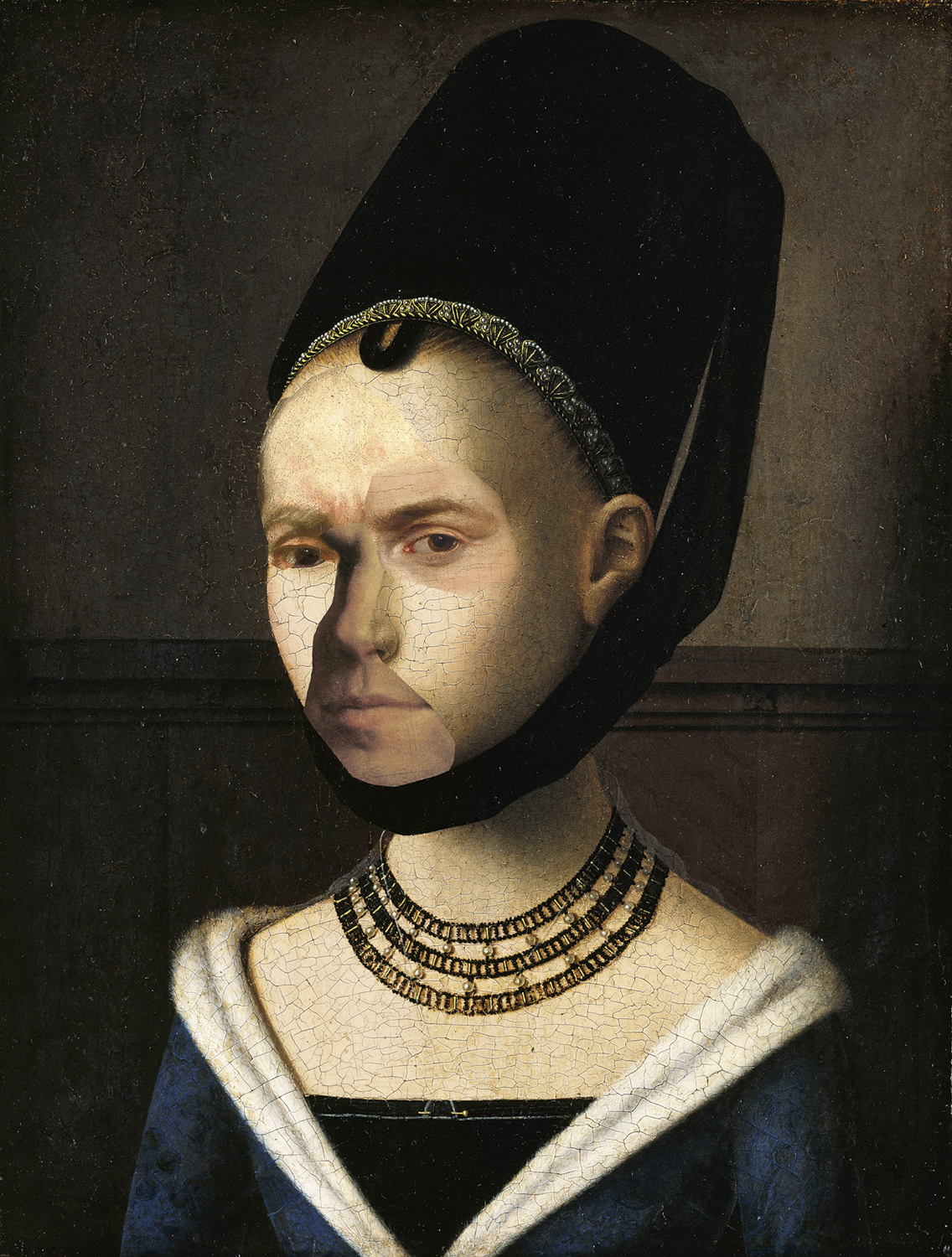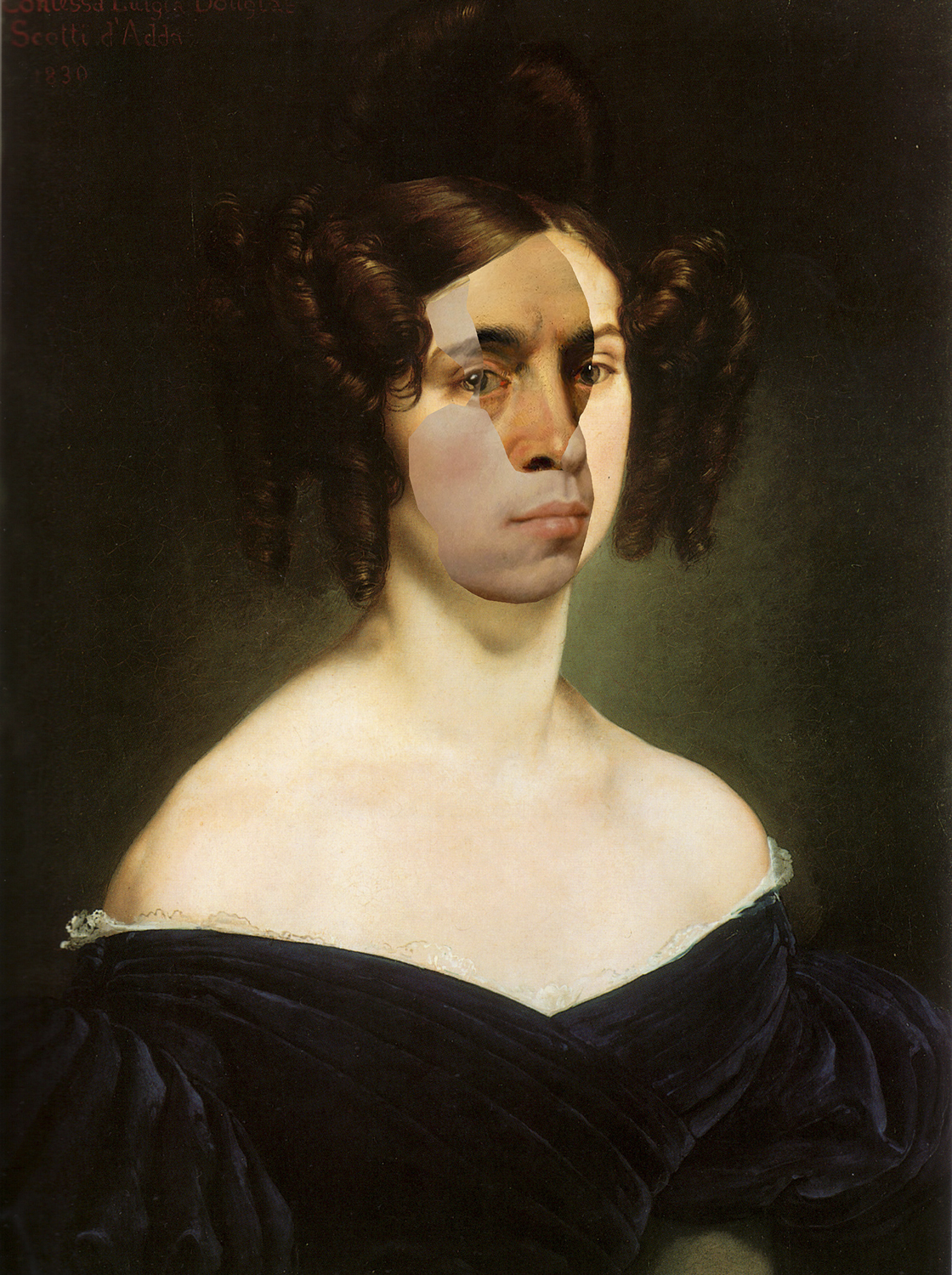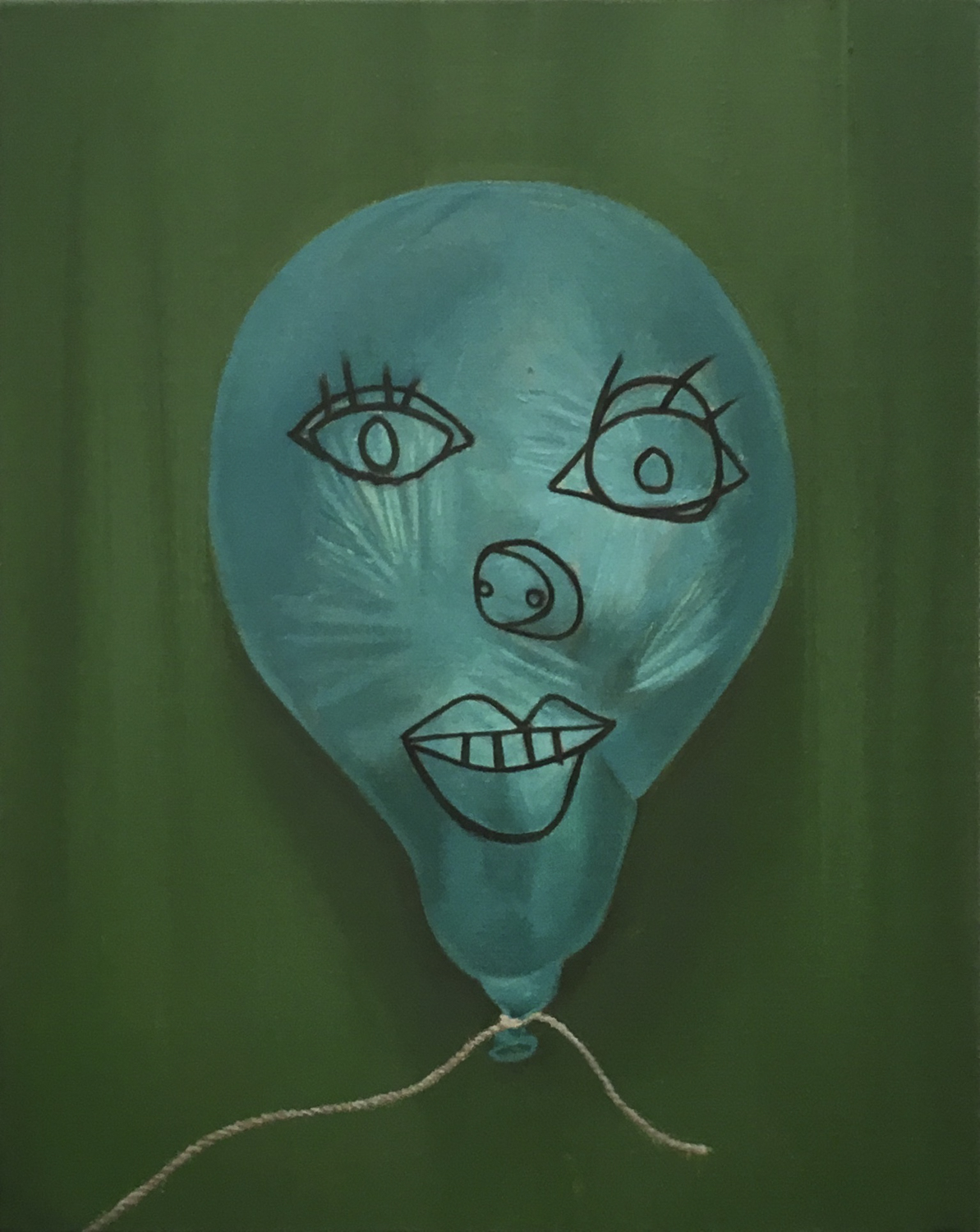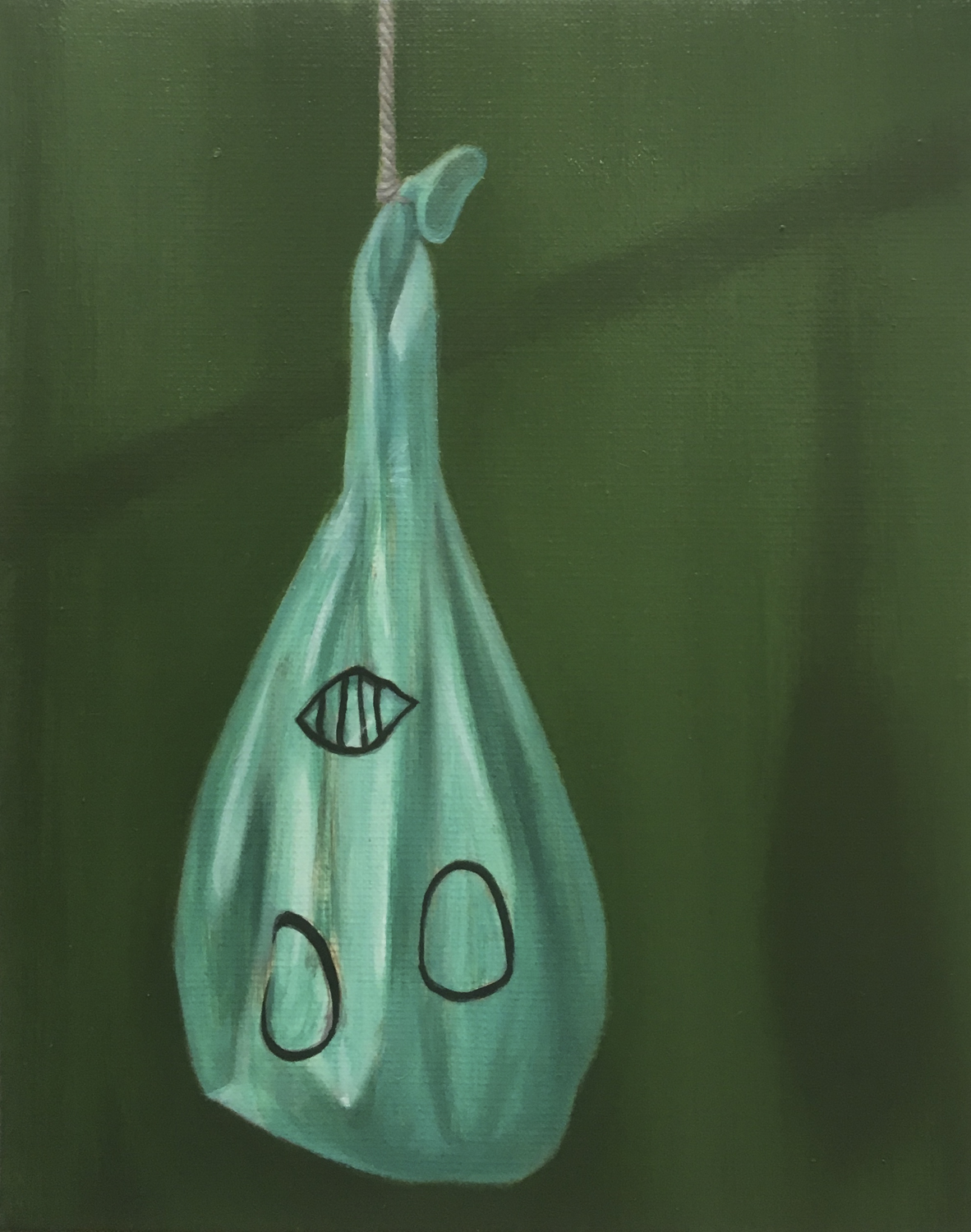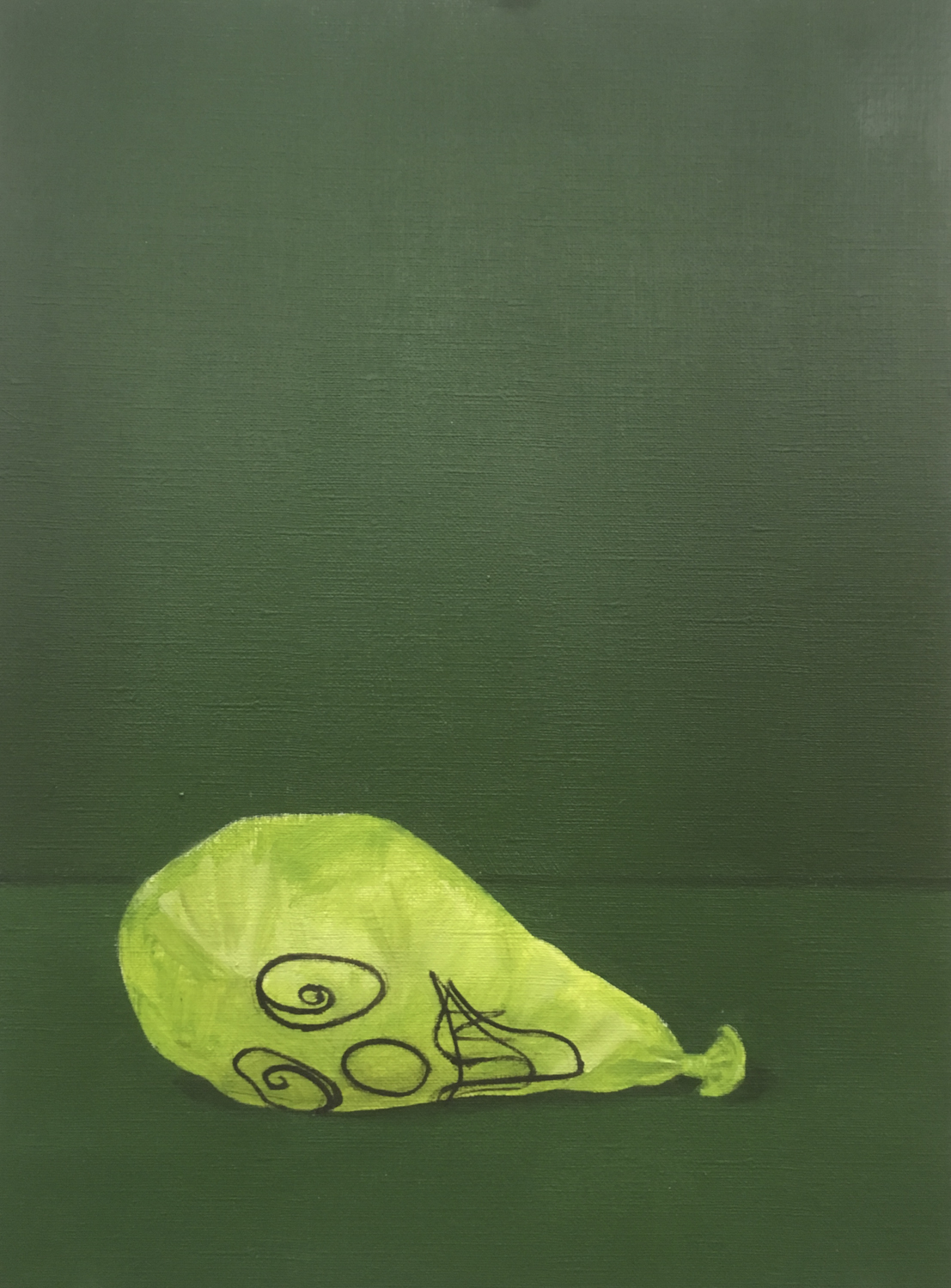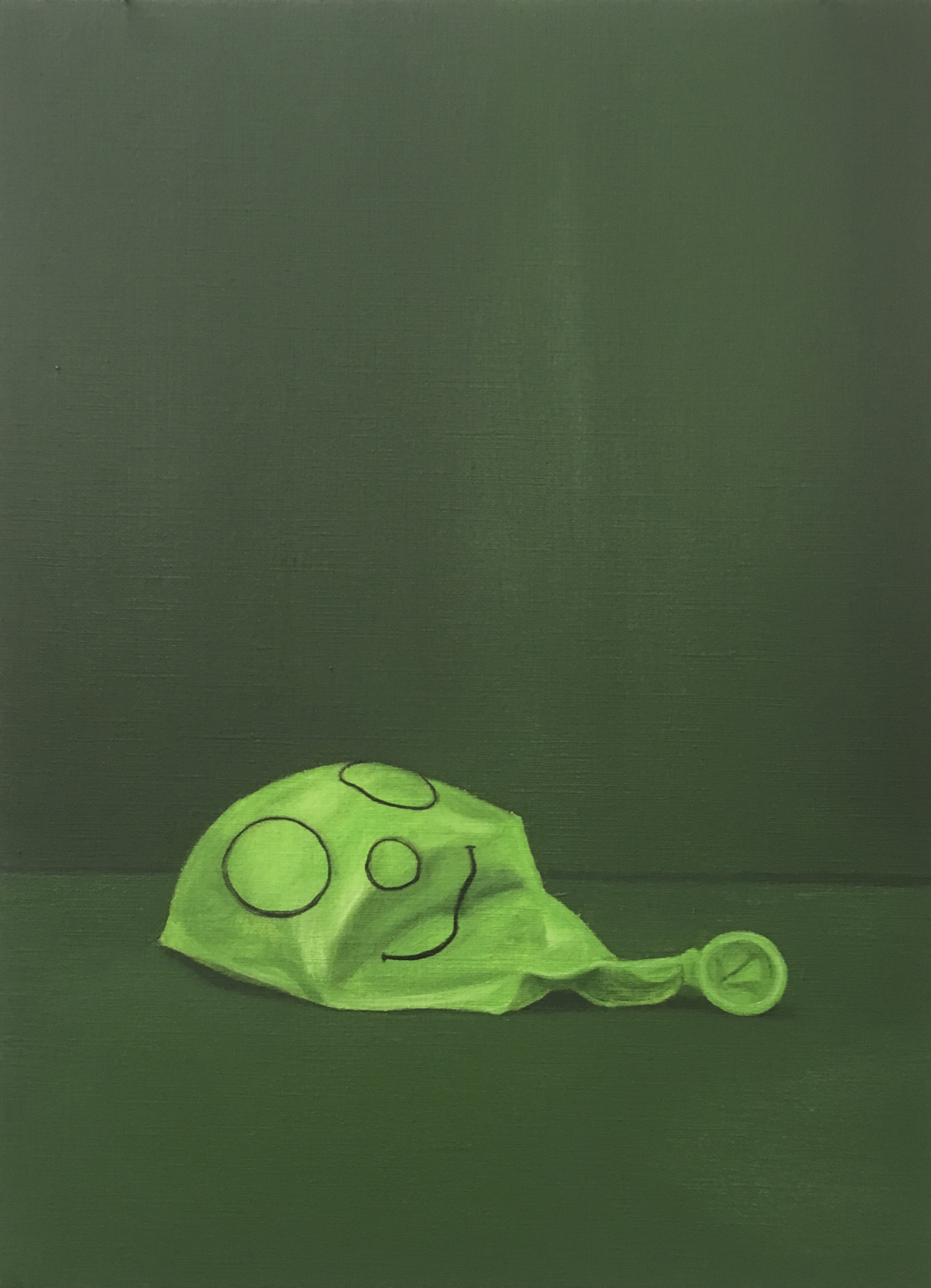masc | mask | masque
A Five Years & Darling Pearls & Co Collaboration
Denise Alves-Rodrigues / Itziar Bilbao Urrutia / Rolina E. Blok / Koenraad Claes / Leigh Clarke / Holly Crawford / Chris Dorley-Brown / Alessandra Falbo / Warren Garland / Marcia Beatriz Granero / Marc Hulson / Stewart Home / Esther Planas / Artemis Potamianou / Remco Roes / Alex Schady / Lee Wells
Curated by Rolina E. Blok, Alessandra Falbo & Marc Hulson
Greek Translation: Niki Papakonstantinopoulou
Online from 14th to 31st May 2020
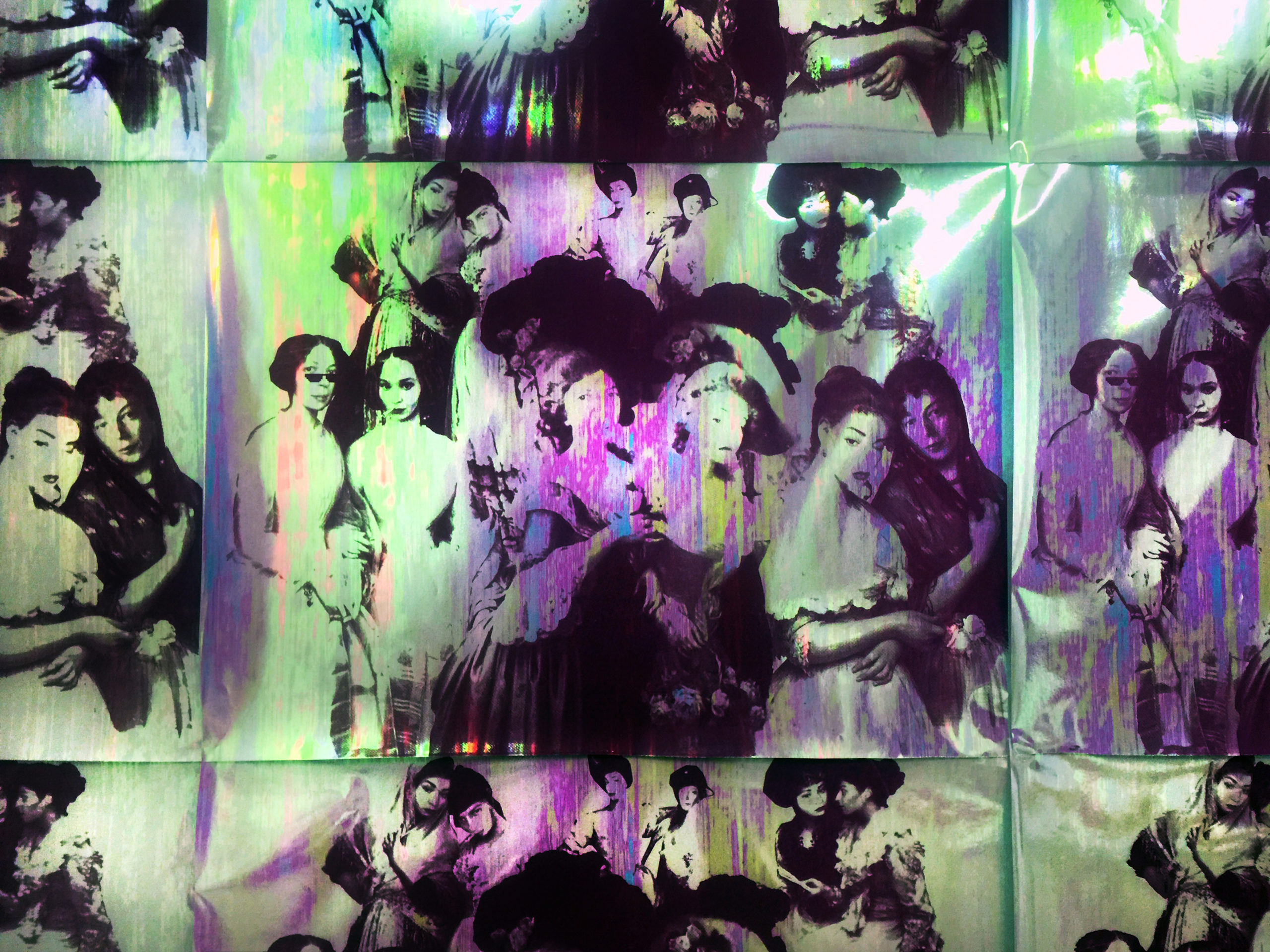
Playing on the semantic and homophonous relationship between the three words that make up its title, the exhibition interweaves themes of concealment, disguise and gender identity.
With reference to the culture of the 17th century court, the word ‘masque’ initially suggested itself as an invocation of the shifting themes of self as other or other as self running through the artworks in this exhibition. Sometimes framed as a play within a play in the literature of the period (A Midsummer Night’s Dream or The Tempest for example), Masques involved elaborate allegorical entertainment in which identities were disguised. The subversive potential of the form in relation to gender and sexuality was explored in a later work, Theophile Gautier’s classic of 19th Century decadent literature, Mademoiselle de Maupin.
To ‘mask’ is simply to conceal an identity, to take up a different one or, in the case of many of the works included here, to extend an existing one into a magical realist realm.
‘Masc’ is a slang term, short for masculine in the LGBT milieux in which it was coined. Some of the works in the exhibition interrogate its negative connotations in the context of gender politics, both within and without the queer spectrum, reversing or re-reading masc through magic.
Rolina E. Blok, Intervention : Celestial Vault – James Turrell, 2018
Marcia Beatriz Granero, Von Suttner Salad, 2013
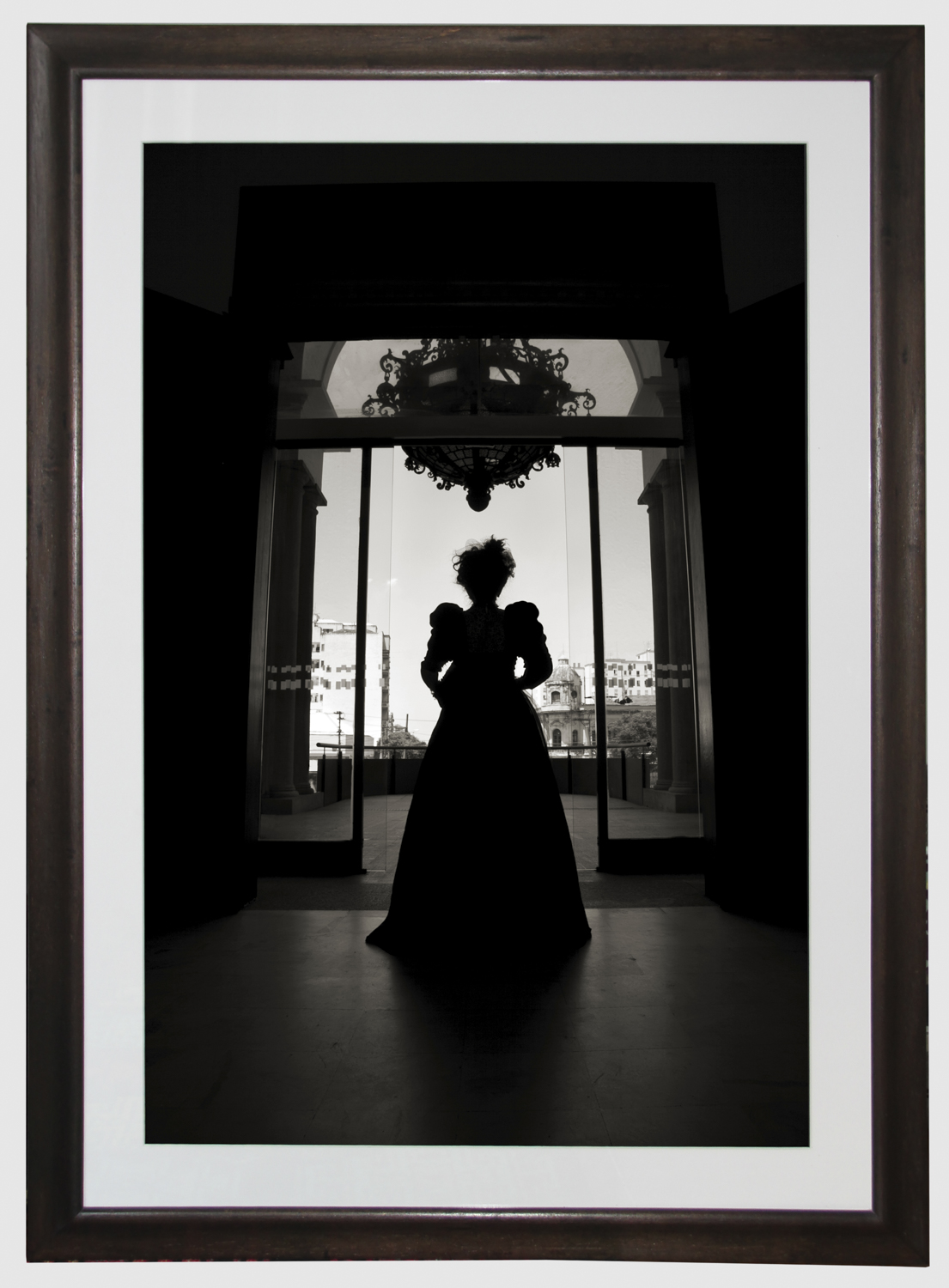
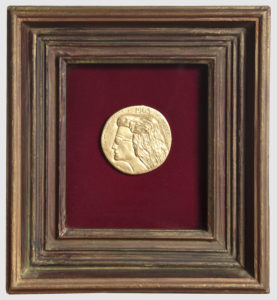
Von Suttner Salad (2013) is an installation by Macia Beatriz Granero composed of one photograph, one video and one framed object: the Medal Of Merit that is a constituent part of the fiction presented in the video. Jaque Jolene is a fictional autobiographical entity who from time to time inhabits Marcia Beatriz Granero’s body. The artist collaborates with Jaque in performative actions as they visit historic buildings where cultural institutions are established. These performances result in videos, photographs and installations. In them, cinematic language is explored not in order to undermine the fallacies of cinematic constructions but as a device for investigation and presentation of their surroundings. “Synopsis: Jaque Jolene finds a breach in space-time and proves the Theory of Relativity by travelling to 1905. She receives the Nobel Peace Prize inside the ceremonious chamber of the Pinacoteca do Estado de São Paulo (Brazil).”. Moreover, the piece was inspired by Bertha Von Suttner, the first woman to receive The Nobel Peace Prize (1905) and by the Theory of Relativity (published in 1905); it was filmed at the Pinacoteca do Estado de São Paulo, an institution founded also in 1905.
Warren Garland, You are always on my mind, 2020
You are always on my mind (2019) is the video art piece no. 020 from Warren Garland’s series Welcome To Baltia. Throughout this series of short video art works, cut-out and collaged pieces of appropriated footage function as signifiers from the artist’s present and past surroundings as he presents a fictional parallel world: the mythological island called Baltia that parodies, mimics and subverts current reality. In this particular video the mummy from Scooby-Doo (protagonist) continuously walks the streets of an otherworldly dystopian London. The location is indicated by the buildings in the background such as terraced housing, blocks of Council flats and a pub. Alongside other time-specific elements and characters such as the Austin Allegro small family car model and characters from the 80s My Little Pony TV animation series, these buildings indicate the current spectral nature of English dreams of the past. An orange skyline is intercalated with scenes from The Dam Busters (1955), an epic British war film which here seems to refer to controversial moments in national history as well as to potential bouncing bombs in the present; and, towards the end of the video, with Burberry’s 2017 collection introduction campaign starring Cara Delevingne (upper class English model, actress and singer) and Matt Smith (known for his role as Dr Who) which here represents capital.

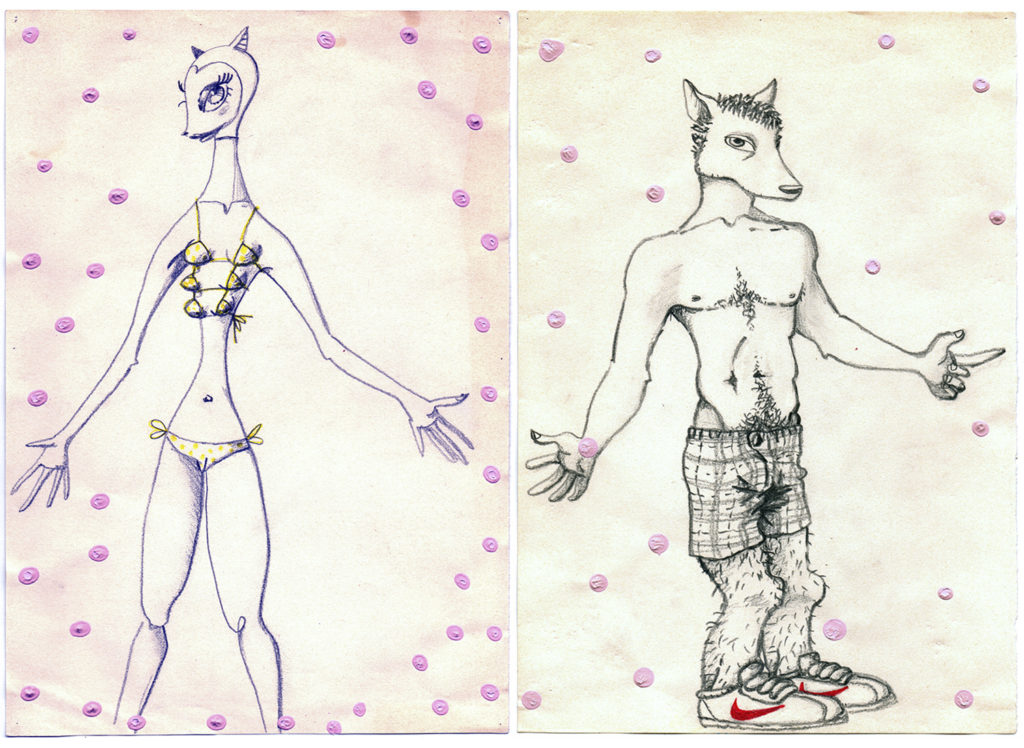
Itziar Bilbao Urrutia – drawings 1999-2019. Across a 20-year time span, Itziar’s work shows her continuous interest in the monstrous feminine from her earliest work on paper to her current multimedia work. Myth, metaphor, and London street culture mix to create a world where gender roles are reimagined as deceptively Kawai characters in the urban jungle.
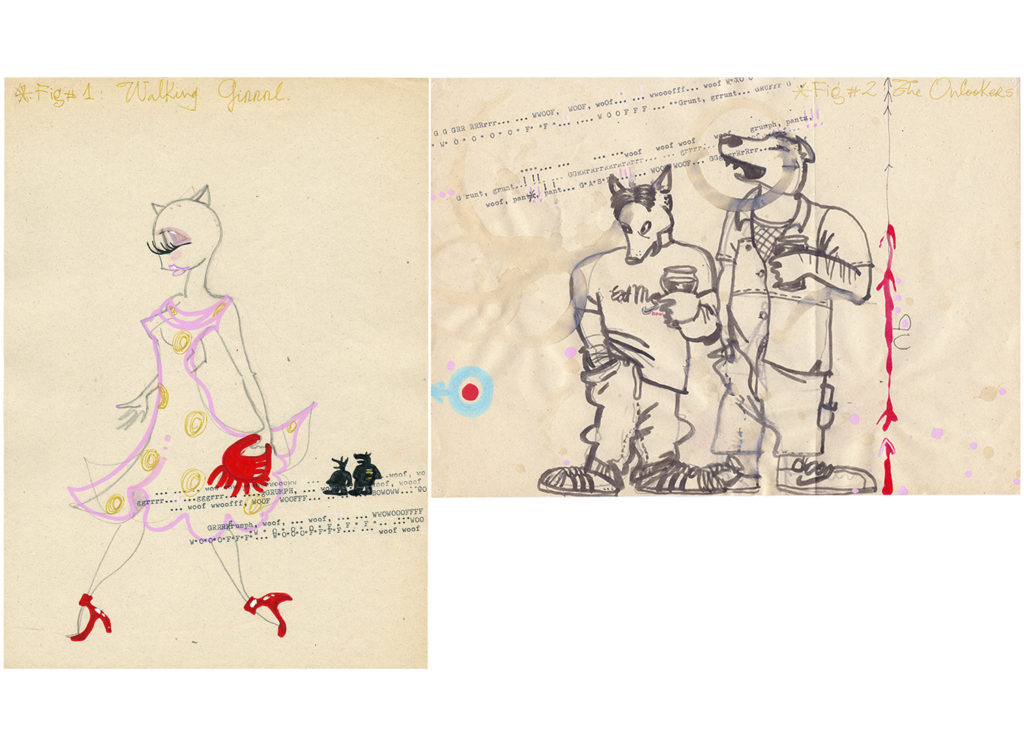
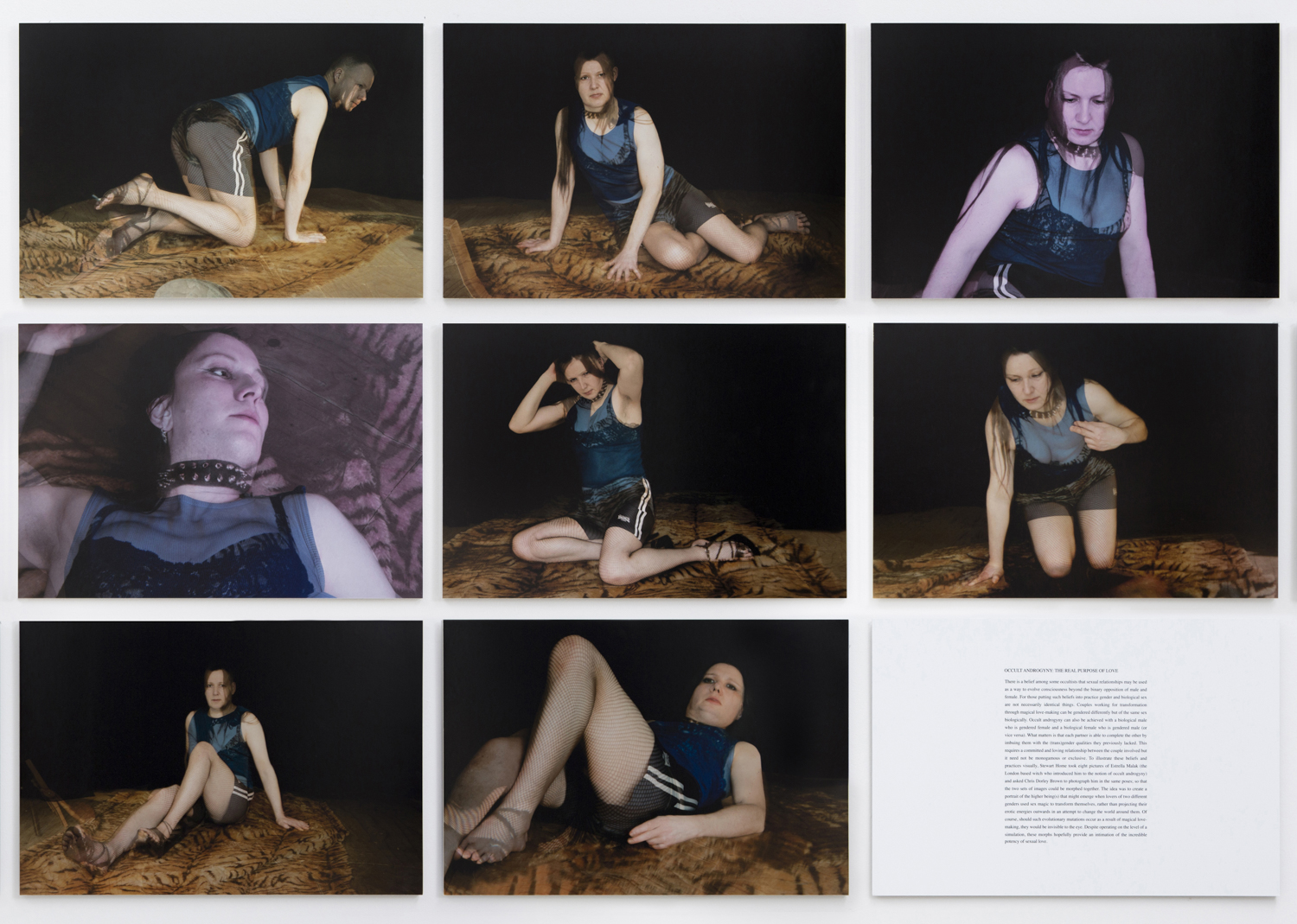
OCCULT ANDROGYNY: THE REAL PURPOSE OF LOVE
There is a belief among some occultists that sexual relationships may be used as a way to evolve consciousness beyond the binary opposition of male and female. For those putting such beliefs into practice gender and biological sex are not necessarily identical things. Couples looking for transformation through magical love-making can be gendered differently but of the same sex biologically. Occult androgyny can also be achieved with a biological male who is gendered female and a biological female who is gendered male (or vice versa). What matters is that each partner is able to complete the other by imbuing them with the (trans)gender qualities they previously lacked. This requires a committed and loving relationship between the couple involved but it need not be monogamous or exclusive. To illustrate these beliefs and practices visually, Stewart Home took eight pictures of Estrella Malak (the London based witch who introduced him to the notion of occult androgyny) and asked Chris Dorley Brown to photograph him in the same poses; so that the two sets of images could be morphed together. The idea was to create a portrait of the higher being(s) that might emerge when lovers of two different genders used sex magic to transform themselves, rather than projecting their erotic energies outwards in an attempt to change the world around them. Of course, should such evolutionary mutations occur as a result of magical love-making, they would be invisible to the eye. Despite operating on the level of a simulation, these morphs hopefully provide an intimation of the incredible potency of sexual love.
Marc Hulson, Rehearse / Replace, 2014
Rehearse / Replace is one of several works to emerge from an ongoing dialogue between visual artist Marc Hulson and novelist Paul Curran. Sharing an interest in transgressive art, experimental writing, fictional realities, and internet communities, Hulson and Curran discovered each other’s work in 2006 through American author Dennis Cooper’s blog (‘The Weaklings’). The second part of the video is inspired by an unrealised performance conceived by Jonny Liron in response to a particular drawing by Marc and a corresponding text by Paul. Liron’s notes, along with prosthetic make-up based on casts of his body, were used by Marc as material to complete the project. Thus the film is the culmination of a series of echoes, displacements and substitutions, with Marc ‘impersonating’ Jonny in the place of a character that itself interprets the degendered figures in his own drawings and paintings, and the impossible, damaged textual personae of Paul’s writing. The soundtrack by E W Deraze is an edited section of a longer piece composed in response to Hulson’s and Curran’s work: it is composed mainly of overlaid, collaged elements and samples the voices, performances and recordings of R D Laing, Murray Gelman, Douglas Hofstadter, Nina Simone and Benjamin Britten among others.
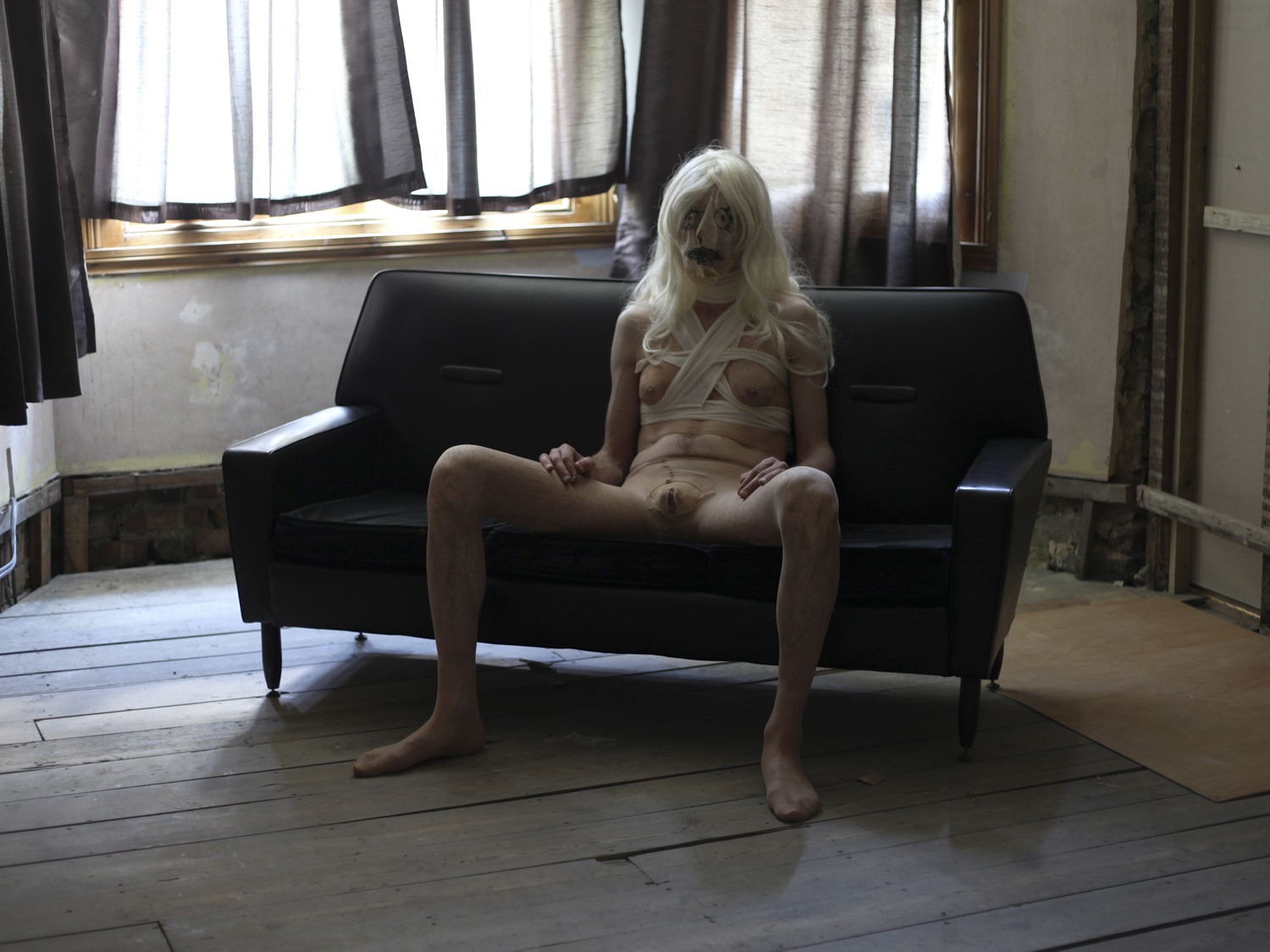
Esther Planas, All Cats are Grey, 2007
The film All Cats are Grey was the final part of a trilogy in which Esther Planas explored the detritus of pop culture, in a mode she termed Dark Pop. In this work Planas channels the character Irma Vep, played by Musidora in the 1920s, traveling across the residual sinister fetishes found in film, comics and horror literature. The film’s soundtrack, featuring a cover version of the The Cure song after which it is titled, is played by Planas’s band Dirty Snow, in which she also sang.
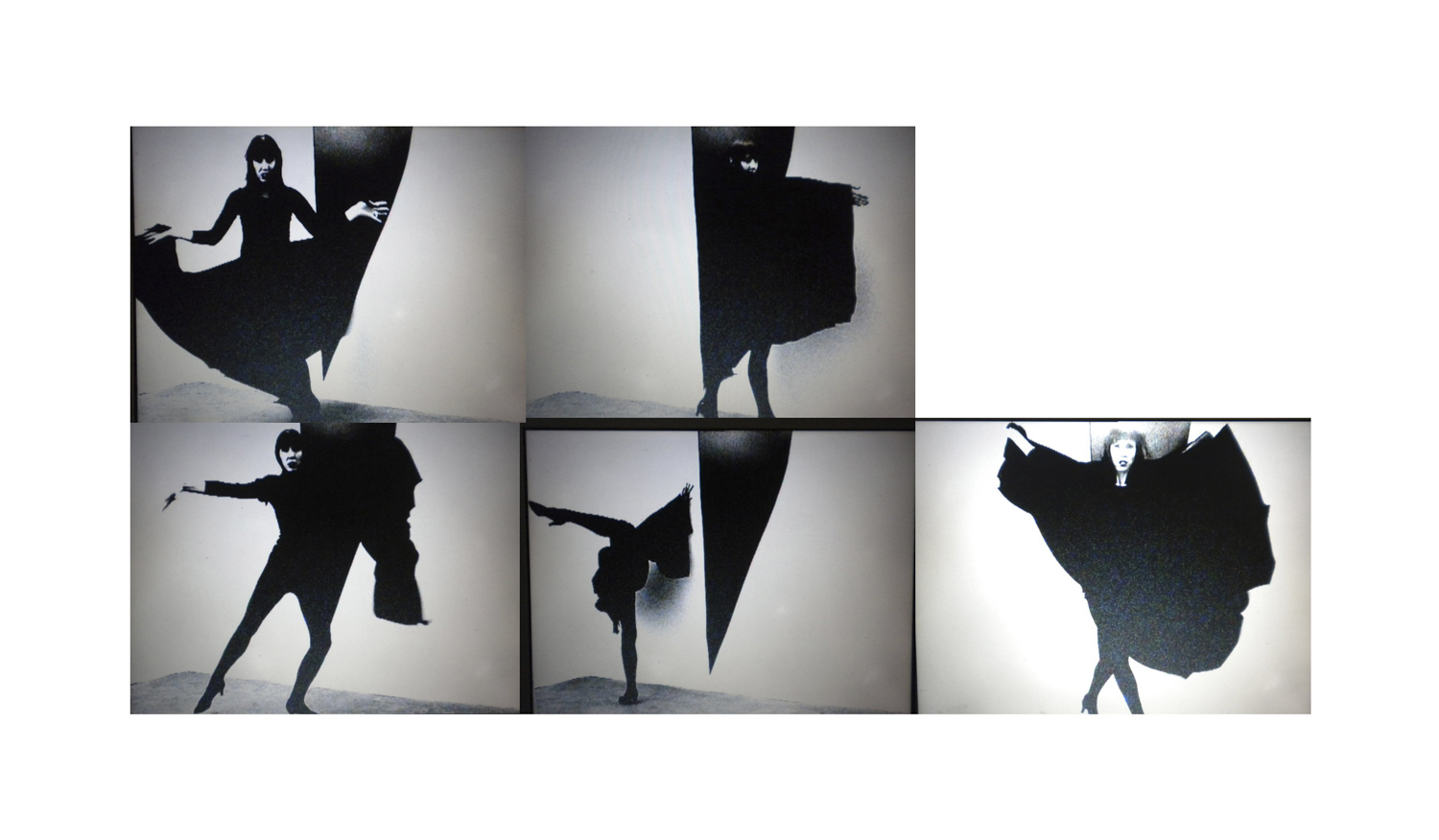

In Almas fingem entre nós [Souls lie between us] (2019) Denise Alves-Rodrigues appropriated an image of the Polish spiritualist medium known as Stanisława P. (b. c. 1893) in which she is, supposedly, excreting ectoplasm. This gauze-like substance was said to be spiritual energy, formed by physical mediums when in a trance state. Its appearance was common during seances from the end of the 19th up to the beginning of the 21st century when its existence was fully discredited by scientists alongside other tricks used in these events. The existence or nonexistence of this substance is not as relevant to the artist as its mesmerising visual effect (here enhanced by mirroring within the piece) and the willingness of the public to believe in it.
Lee Wells, Double Sophia (video map), 2019 / Audio by Digi Love (Vassilis Xenoudakis) – Sophia’s Saga, 2019
Double Sophia (2018) engages popular concepts of artificial intelligence and the advancements in android development like Hanson Robotics Sophia. The multimedia artwork helps the viewer reflect back at themselves in order to better understand one’s identity in 21st-century society.
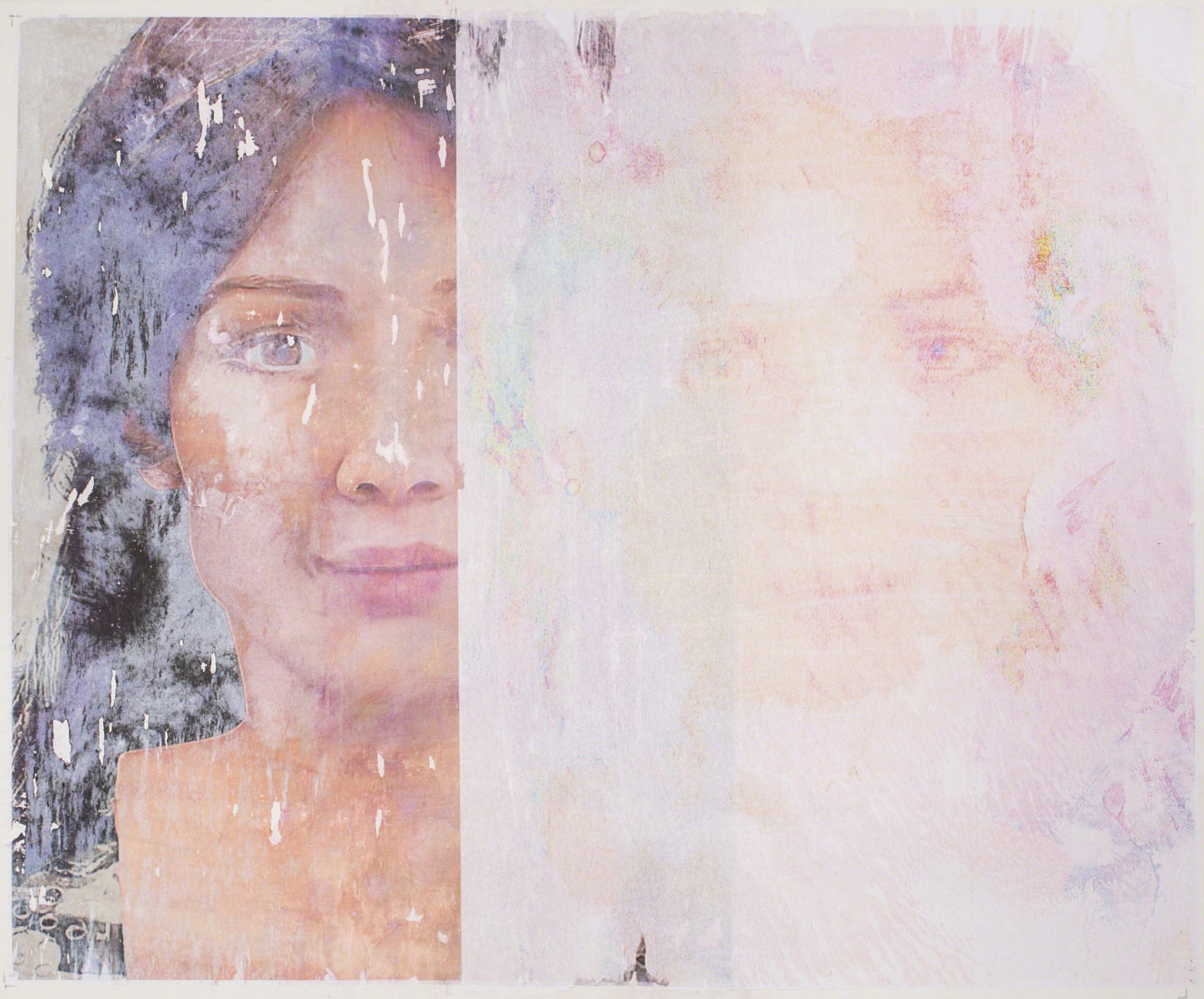
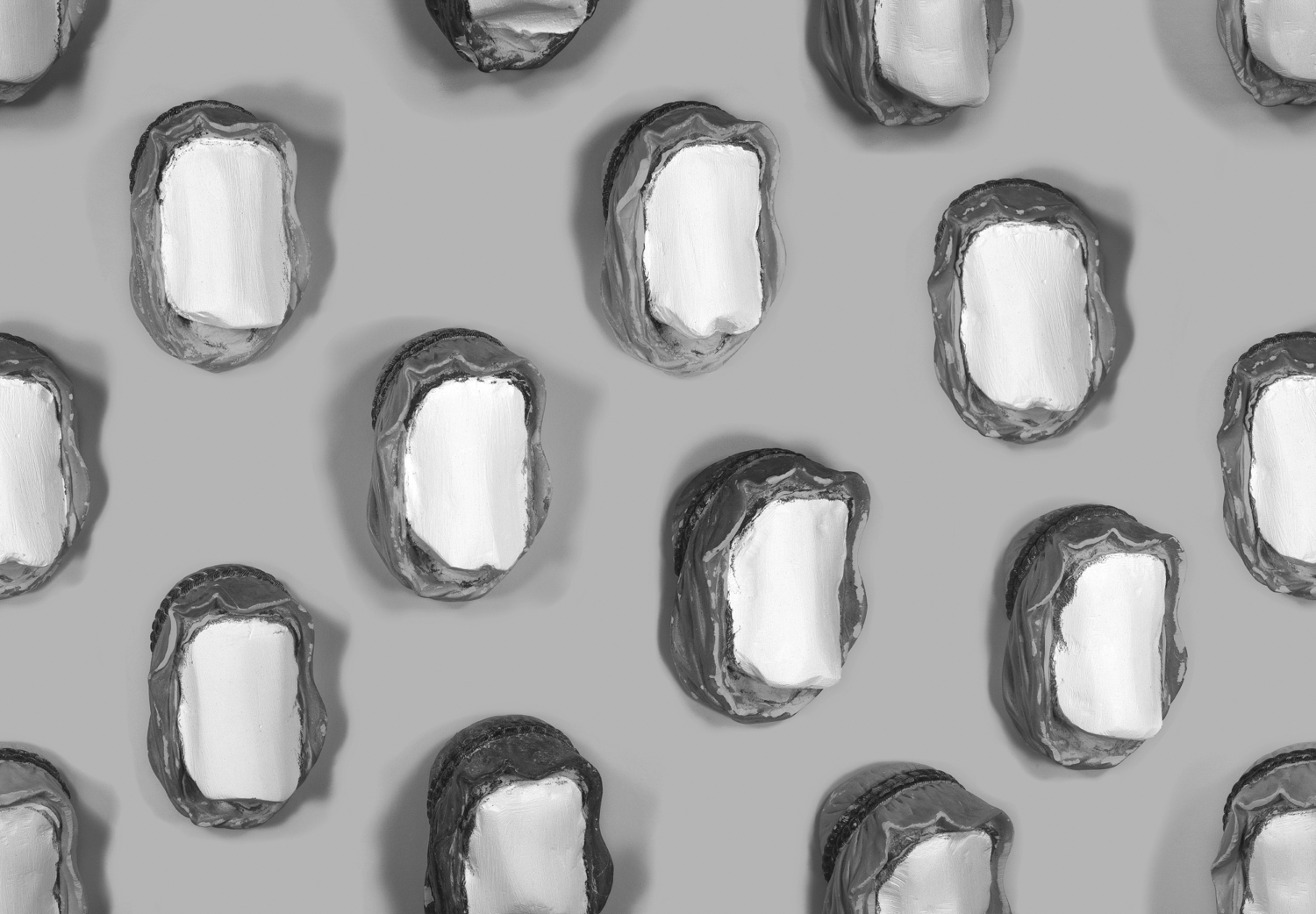
In the 70s Leigh Clarke grew up with a group of the most produced and least collectable of the Bossons catalogue – that of a Syrian man – on the wall of his family home. For this work, Clarke has stripped back a larger number of heads, rendering them faceless and revealing the ‘chalk’ of the plaster beneath. The removal of the identity of Bosson’s Syrian makes reference to how British society has represented Syria, from the age of Lawrence of Arabia to news reports of the biggest humanitarian crisis since World War II, and alludes to Britain’s iconic gateway to Europe, the White Cliffs of Dover.
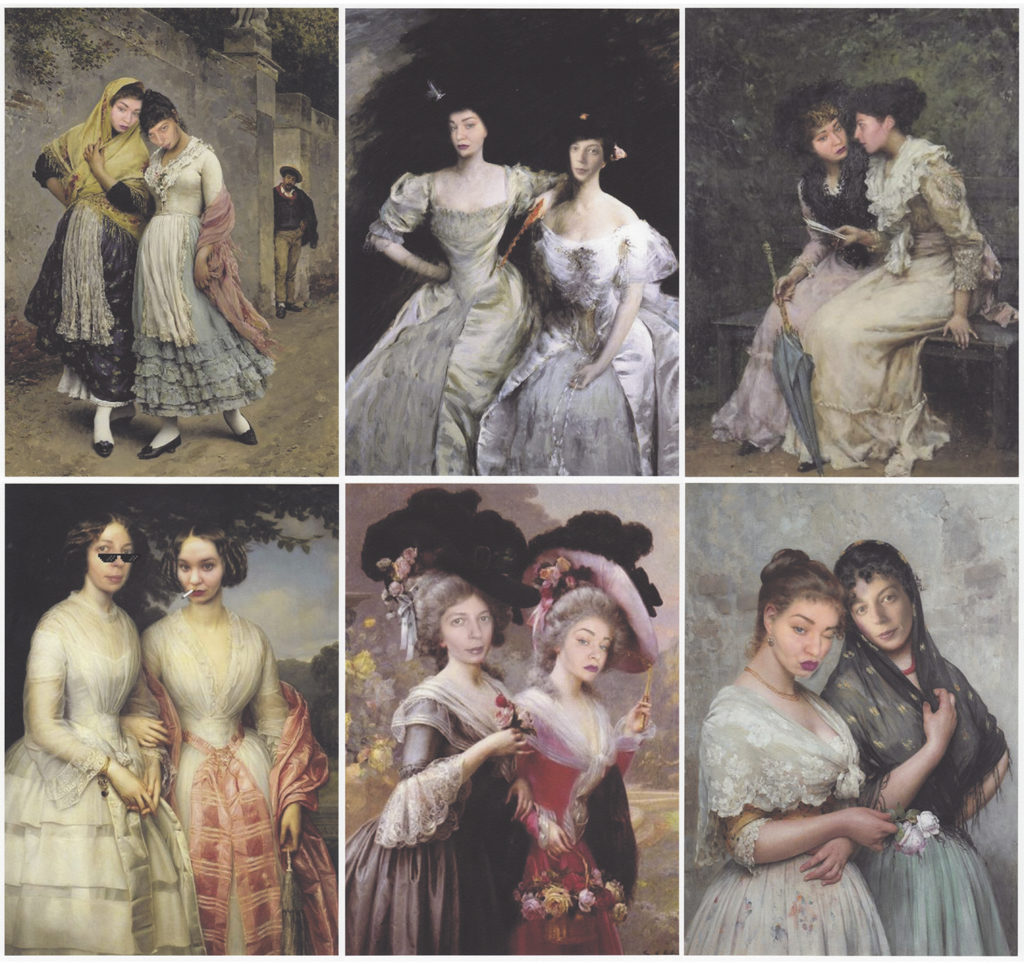
“The Ladies Who Lunch” title is a reference to the song of the same name from Stephen Sondheim and George Furth’s 1970 musical “Company” in its original presentation by Elaine Stritch who plays Joanne in the show. Other interpretations taken into consideration, the LWL no. 1-6 (2020) series and Here’s To The Ladies Who Lunch (2020) silkscreen varied limited edition on wrapping paper, both by Alessandra Falbo & Rolina E. Blok, are still about fake facades in socialites’ lifestyles. In these works, the artists have their faces Deepfaked into various famous paintings of bourgeois and aristocratic ladies found in online memes. They playfully refer, in this way, to their various attempts at appropriating the socialite look for personal financial gain.
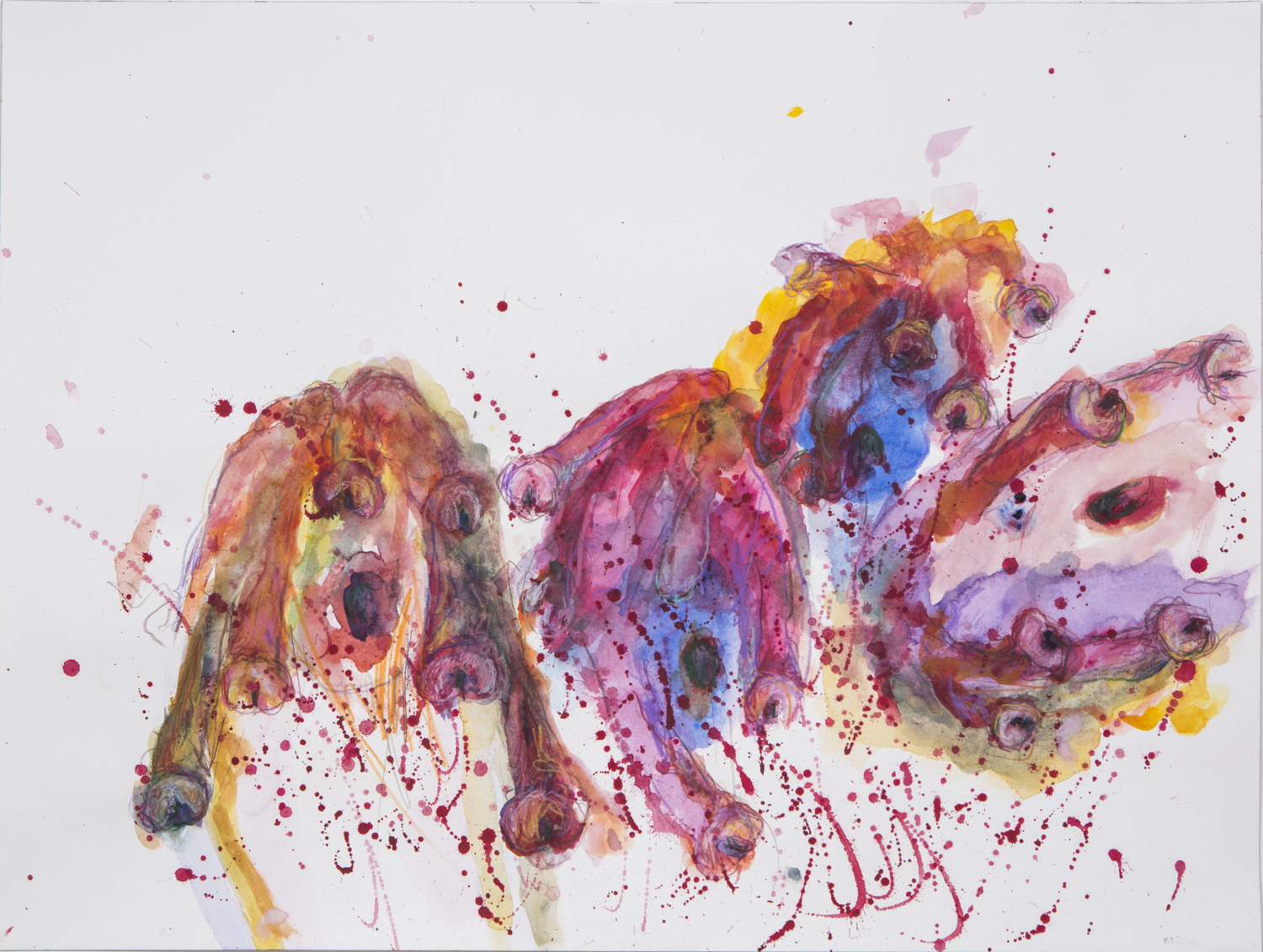
“The Silence Drew Off, Laughing With Medusa, is an ongoing series created under the sign of Medusa. Portraits are done in fragile media—WC on paper—but we are not fragile creatures of sugar and spice. Medusa is not nice! Nor quiet. Nor sugar. She is a beautiful and laughing presence. A mortal who was raped by a god and then turned into a Gorgon. She survives as a muse, a sign for powerful women and a symbol for our present age. We are her and she is us.” – Holly Crawford. Moreover, each WC features a letter scheme that, indirectly, invokes one or more people who have no voice. The series takes its title from a famous quote found in Sylvia Plath’s only novel The Bell Jar. Crawford is intrigued by its status as a roman à clef and the ways in which such an ‘autobiographical’ work simultaneously accuses and exempts the real world figures semi-fictionally depicted in it from any responsibility for the author’s suicide shortly after its first publication in 1963. Several of Crawford’s art projects have dealt with gifting and art. Given the subject matter of this body of work—power, rape, abuse, and murder—the artist has chosen to donate a percentage of each sale to a charity that helps people selected by the collector.
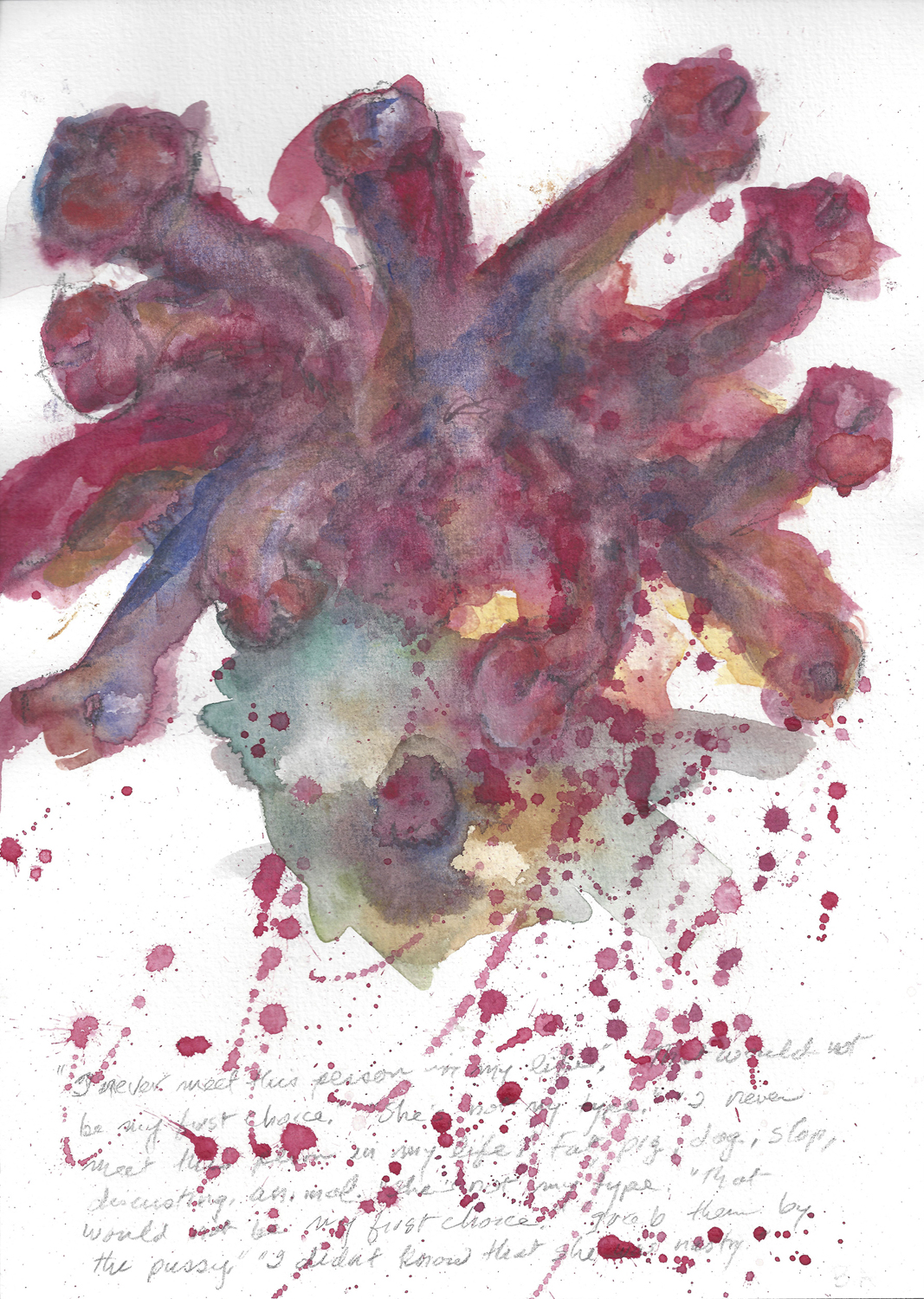


The series title “The Unknown Masterpiece” originates from Honoré de Balzac’s book of the same name: “The Unknown Masterpiece” (1831). Balzac’s work describes an encounter between the fictional artists Frenhofer and Porbus (based on real-life court painter Franz Pourbus) as well as the real-life Nicolas Poussin. Admitted by the painter Frenhofer, Poussin visits the distinguished painter Porbus in his studio. In his quest for absolute beauty, the old painter Frenhofer attempts to create the absolute masterpiece. He keeps “improving” his painting for ten years, ending up with an illegible composition, thus destroying his life’s work. The two central characters of the story, the great maître Frenhofer and the young artist Poussin, were the inspiration and reference for many essays on art and the role of the artist. Frenhofer’s utter devotion to his art inspired Cézanne, Picasso, Rilke and many other artists. Paul Cézanne in particular strongly identified with him, once saying “Frenhofer, c’est moi” (I am Frenhofer). The book fascinated Picasso enough for him to undertake its illustration in 1921. Indeed, he identified with Frenhofer to such an extent that he moved to the Rue des Grands-Augustins in Paris, where Porbus’ studio was located. It was there that Picasso painted Guernica. In the encounters between Frenhofer and Poussin there is however another important character: Poussin’s lover: Gillette. She was the muse and the exchange “object” between the two artists, a tragic figure determined by the decisions and choices of the men in the story. In Potamianou’s series “The Unknown Masterpiece”, famous portraits of women that have earned a place in art history for their virtuosity (in painting) are deconstructed and offer an initial “canvas” that is reconverted and recreated by pieces of portraits of famous men. The series constitutes a sharp comment on the position of women in society and the “male” roles they have to adopt. The picture created in the end is a nightmare image, a “hermaphrodite”, a “Frankenstein” monster composed by “perfect” integral parts.
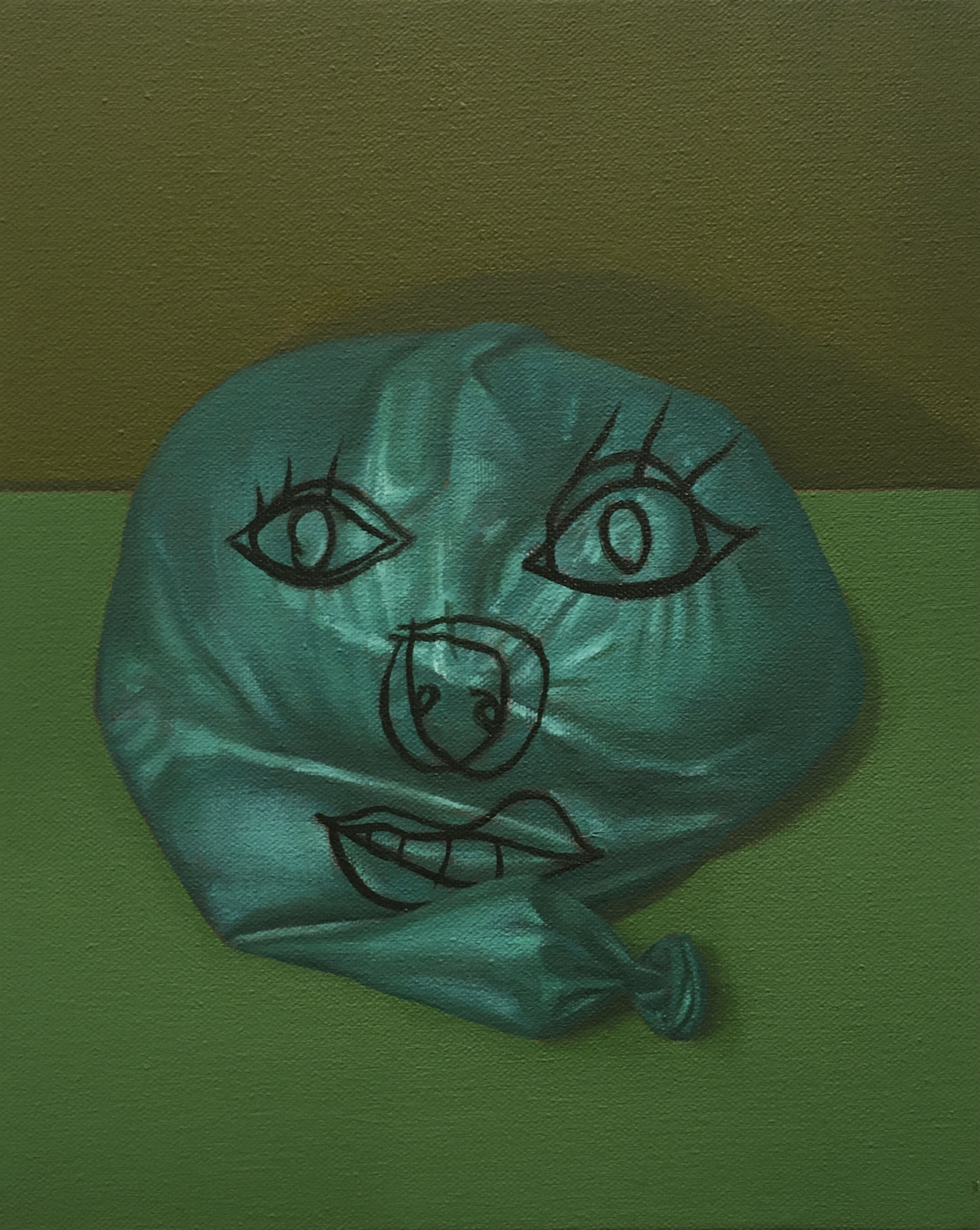
Operating somewhere between the devotional space of the sacred image or icon and the basic emotional register of the emoticon, Marc Hulson’s series of paintings of deflated, defacialized balloons collapse affect and appearance into one exquisitely tortured surface. Emotional expression slowly folds in on itself as the crude immediacy of marker pen on cheap latex is rendered in oil on canvas. The images offer themselves as cartoonish avatars of a degendered self, or as shed skins, discarded husks or scraps of subjectivity.
Alex Schady, Sculptural Proposition, 2020
This piece is part of a series in which sculptural forms are worn and performed. In ‘Sculptural Proposition’ a figure is shown in a domestic setting encumbered by a rock-like form that is pushed over the head and kept in place with an arrangement of pendulous, brightly coloured spheres arranged around his waist. The figure is almost entirely concealed except for bare legs and the grimace of a mouth forced open by an orange mask that hides the rest of the face. The formal concerns that determine the appearance of the work (weight, balance, size) become a set of physical restrictions inflicted on the figure. The artist at home with his work, but in a domestic scene filled with unease and anxiety.

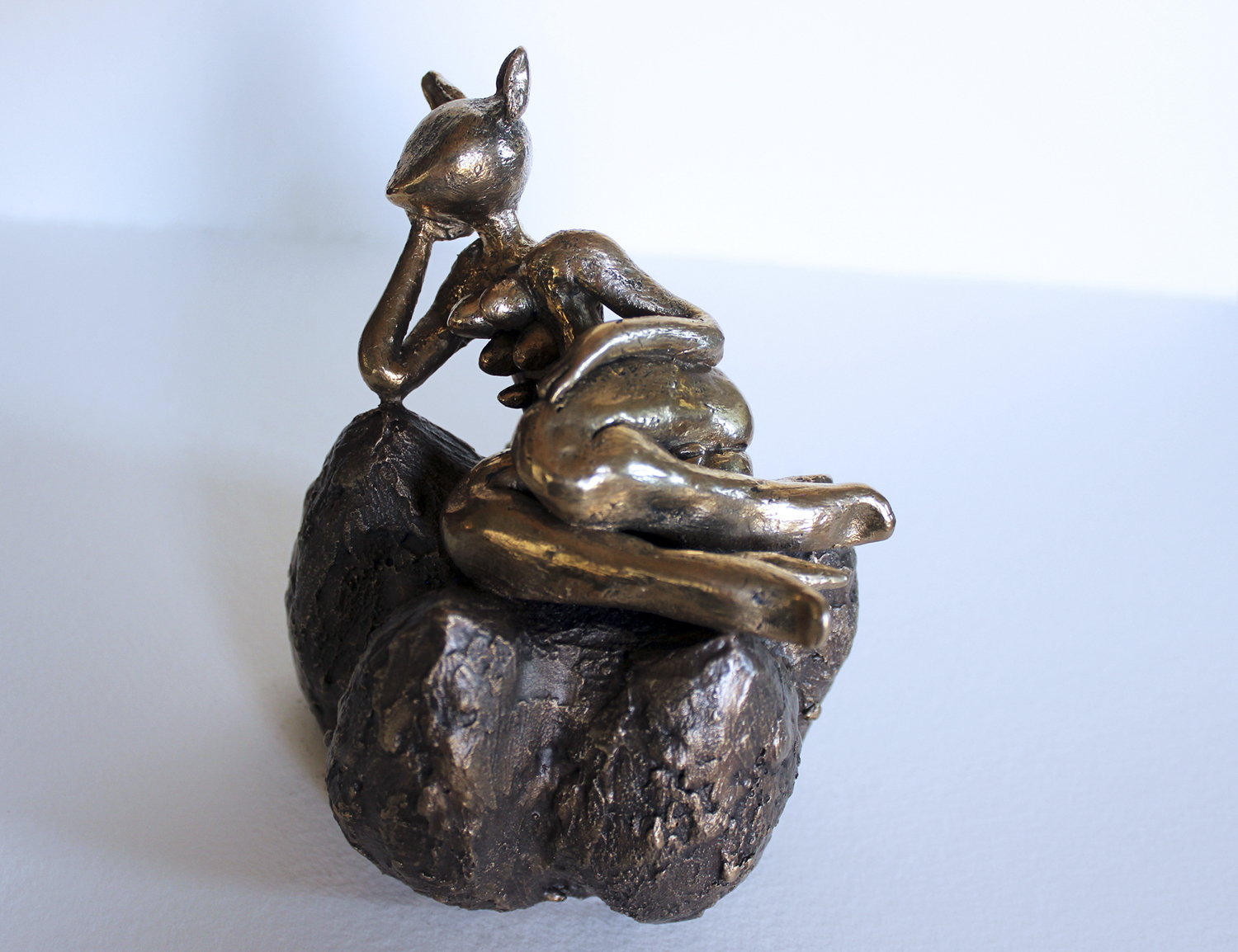
Golden Lotus No#2 (2020), Golden Ball, Golden Heel (1998) and Queen Of My Kitchen, (2000) are some of Itziar Bilbao Urrutia’s early experiments in reimagining the monstrous feminine, a recurrent theme in her practice. The use of cartoon-like female creatures seeks to define a female identity that is both whimsical and perverse, where a semi-human female inhabits Itziar’s world of magical fetishism, made life-like thanks to the photographic media. By appropriating materials traditionally considered the property of high art to render her subjects, her work challenges the boundaries between academicism and profanity.


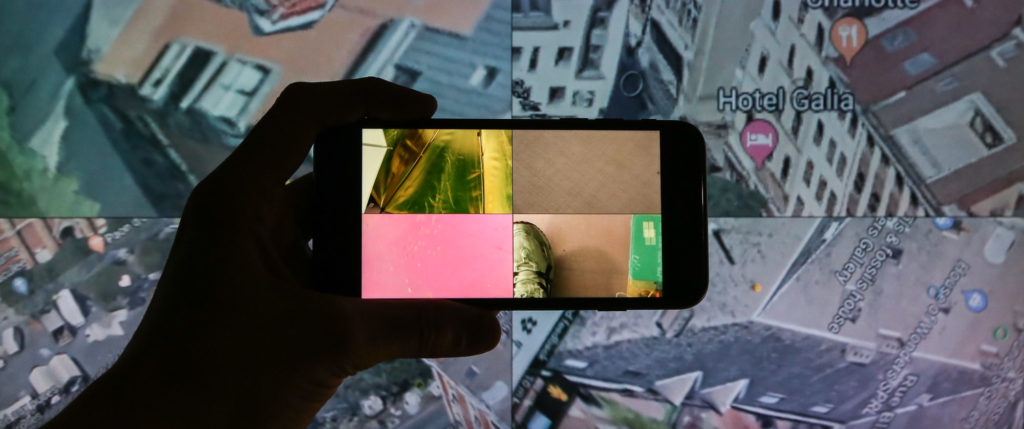
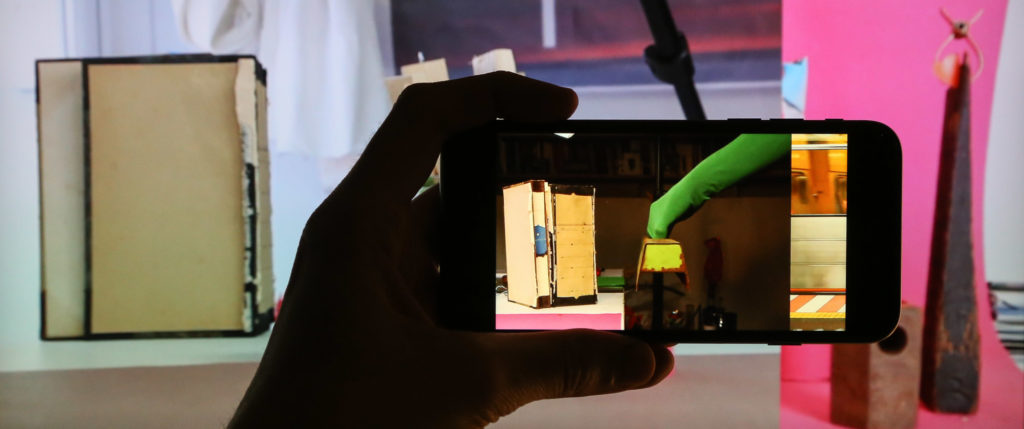
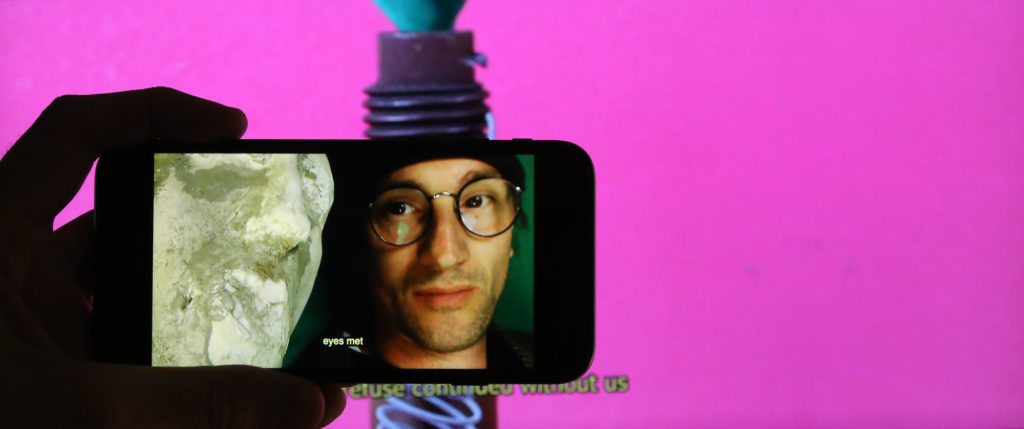
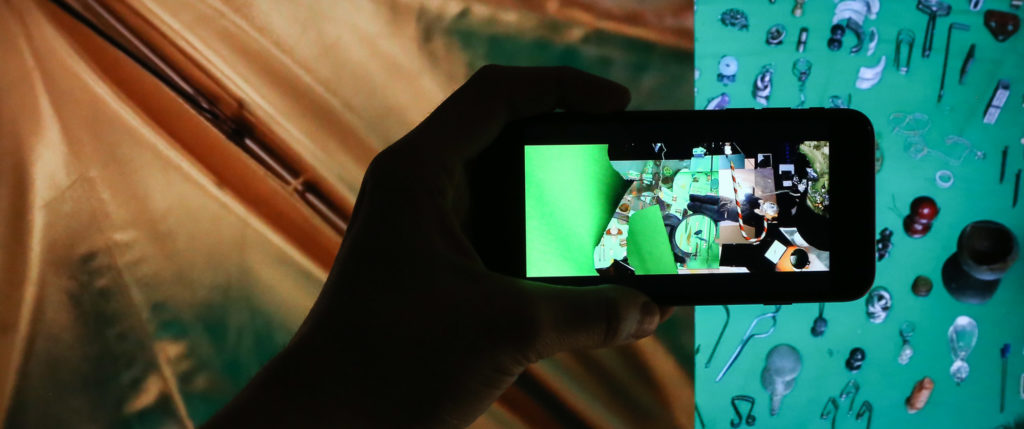
In 2016 Remco Roes and Koenraad Claes formed the collective intermerz (NTRMRZ): an uncontrolled ‘quatre mains’ that culminates in an aesthetic dissonance. Recently NTRMRZ produced a series of works that came into being by copying an almost coincidental original with meticulous precision, but in a different geographical location. By forcing themselves into such protocols NTRMRZ’s publications and videos operate as time-based sculptures, made out of their surroundings, cast by an identical mould, but inevitably enriched by the grain and interference encountered on the journey. However vigorous the attempt to copy, the subject matter inevitably escapes its holder, and in doing so alters the form of past and future copies. ‘Lost and found: a recollection of the studio’ (2020) consists of two videos that approach K and R’s studios as a terrain to mimic previous urban journeys. In the process, the individual working spaces merge into one optical realm. As a way of enhancing this intertwining, the works are meant to be played simultaneously. By following a set of instructions, the viewer is invited to create a spatial and visual connection that functions as a personal diptych.
VIEWING INSTRUCTIONS
- You need two screens: one smartphone and one larger device (iPad, monitor, projector…);
- Open one film per device in full-screen mode;
- Push play on both devices as simultaneously as possible. Any technical deviation and buffering resulting in less sync will be a part of the work;
- Position the smaller device in relation to the larger device.
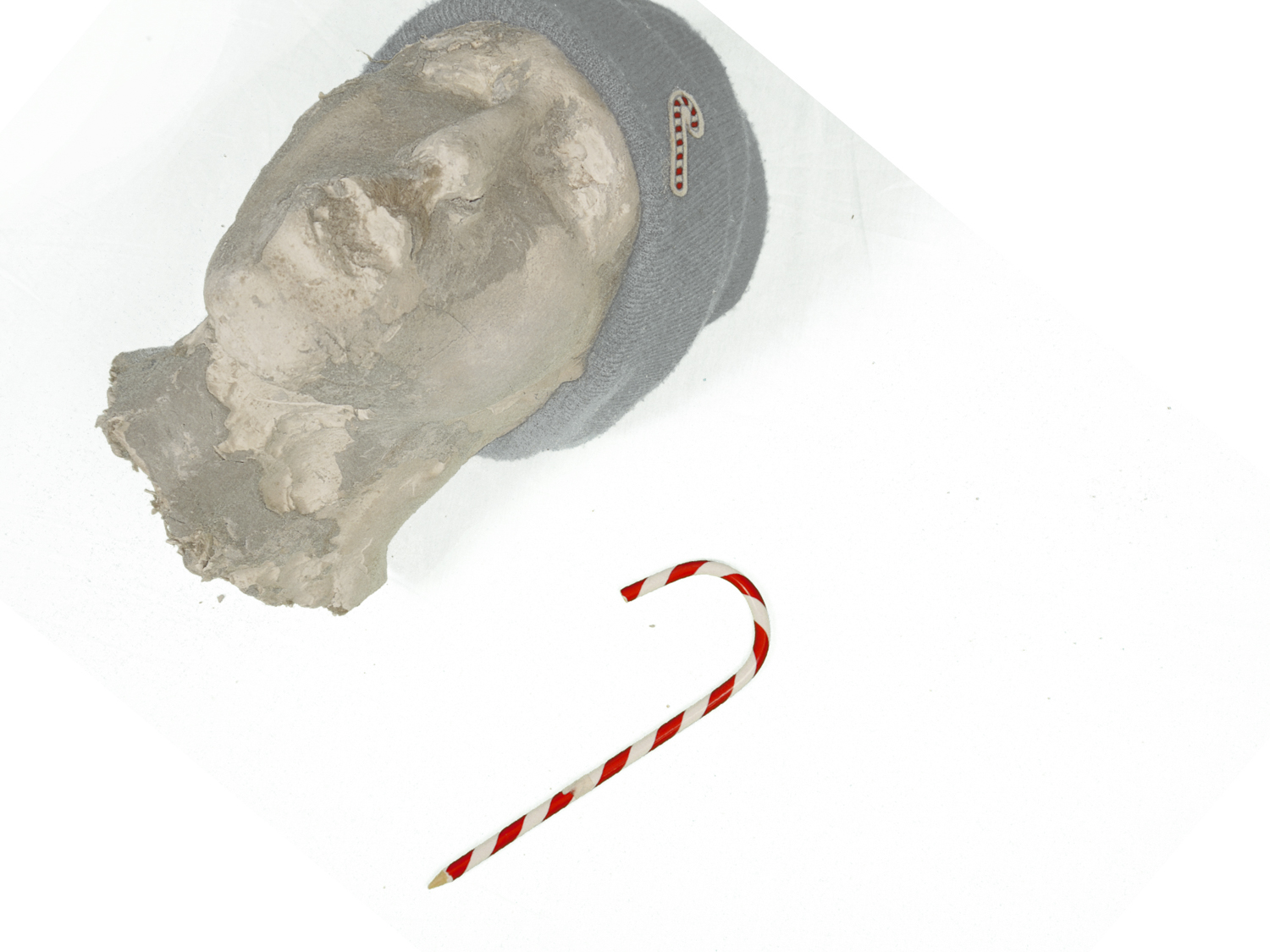
Leigh Clarke, Danser Med Laks, 2008
A Guide to a Moment was curated by Norwegian Curator Anne Szefer Karlsen and funded by the Municipality of Suldal. Seven international artists were invited to make work in the area of Suldal in Norway as part of a residency programme in 2008.
”During the residency, I focussed on the scarce amount of crime in the area and a particular incident that was a taboo subject amongst the locals. The sign of the popular Salmon Museum had been defaced four years previous and had not been repaired or dealt with in any way. Within the 1000 people in the community it was a contentious subject and during my investigations I was told ‘I was stepping in the salad’. I had discovered that the Director of the local newspaper at the time thought his Russian wife was having an affair with the local biologist. Her face was used on the sign and was photographed by the biologist on an innocent day out together. In rage, the Director defaced her image with yacht paint before they moved to Bergen. ” – Leigh Clarke.
The resulting work manifested itself as a film and a soundtrack that with was a collaboration between my beatboxing and Norwegian folk violinist, Tove Solheim. The outcome of the residency was presented to the people of Sand, Suldal at the Municipality Centre and three news items about the work appeared in the local newspaper, Suldlaposten over a three-week period. The film was shown at Artprojx space, London in 2009.
Danser Med Laks derives from the fact that the most exciting thing that the locals speak to visitors about is that Kevin Costner went fishing there, hence Dances with Salmon.
